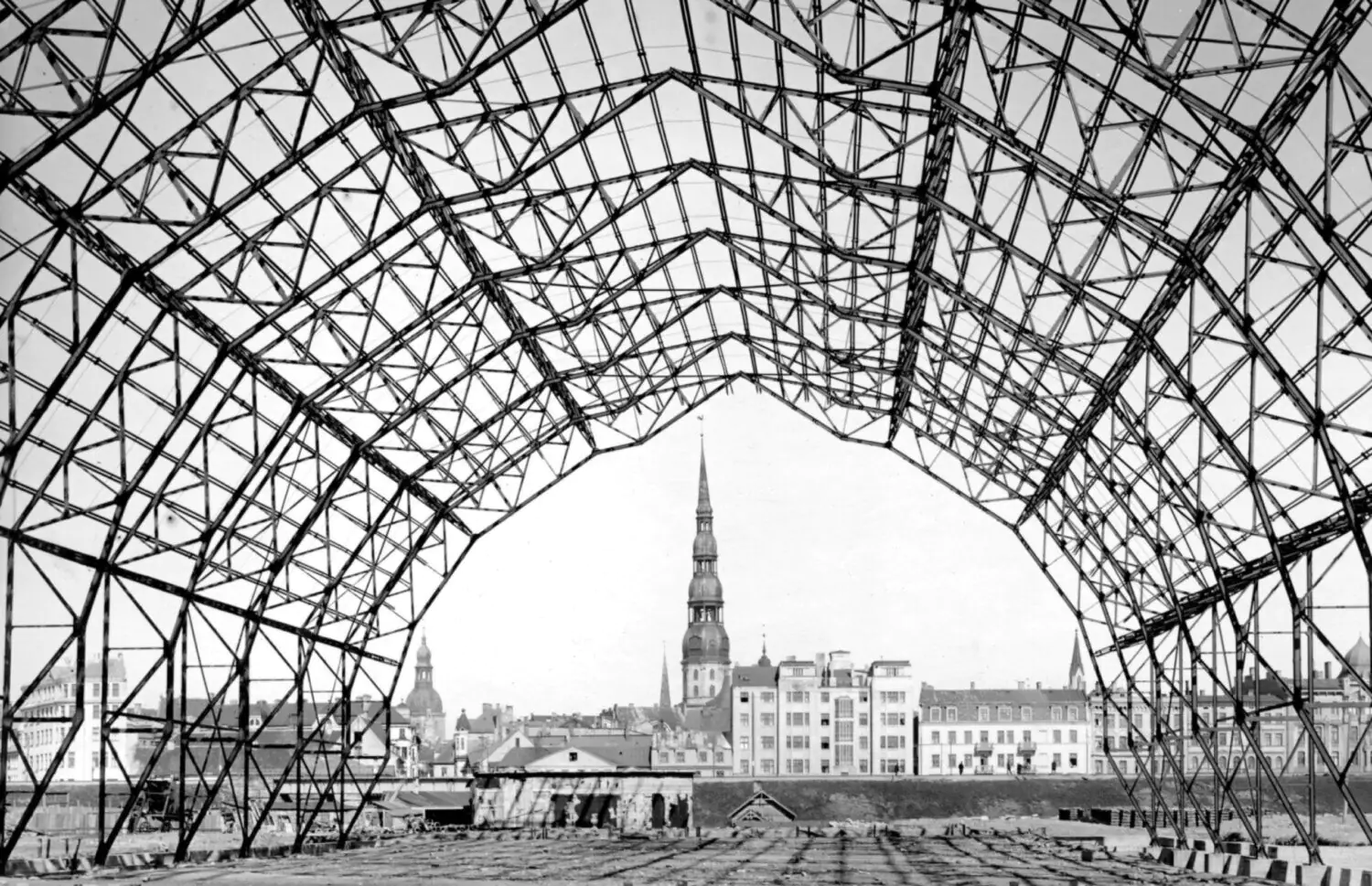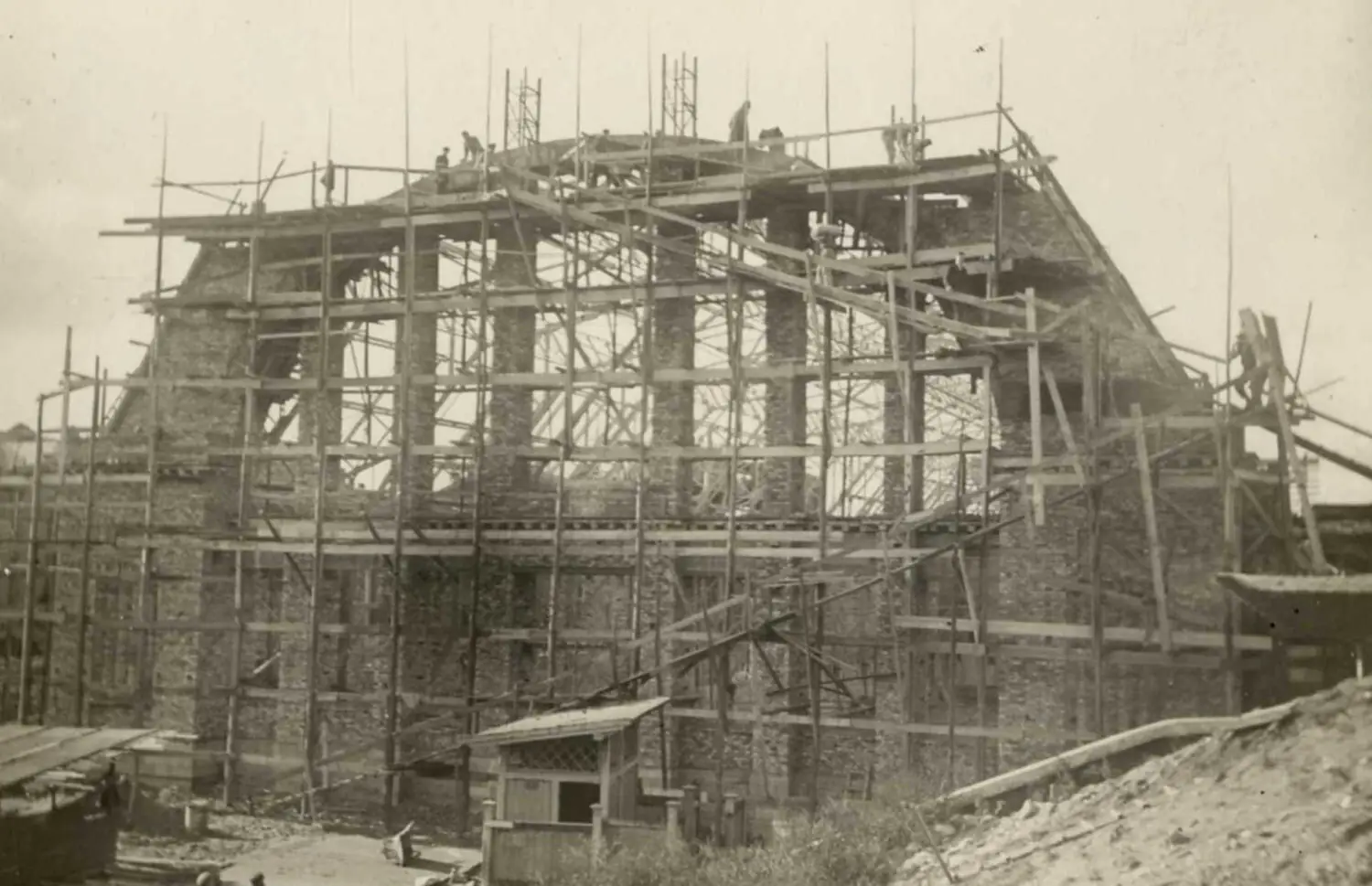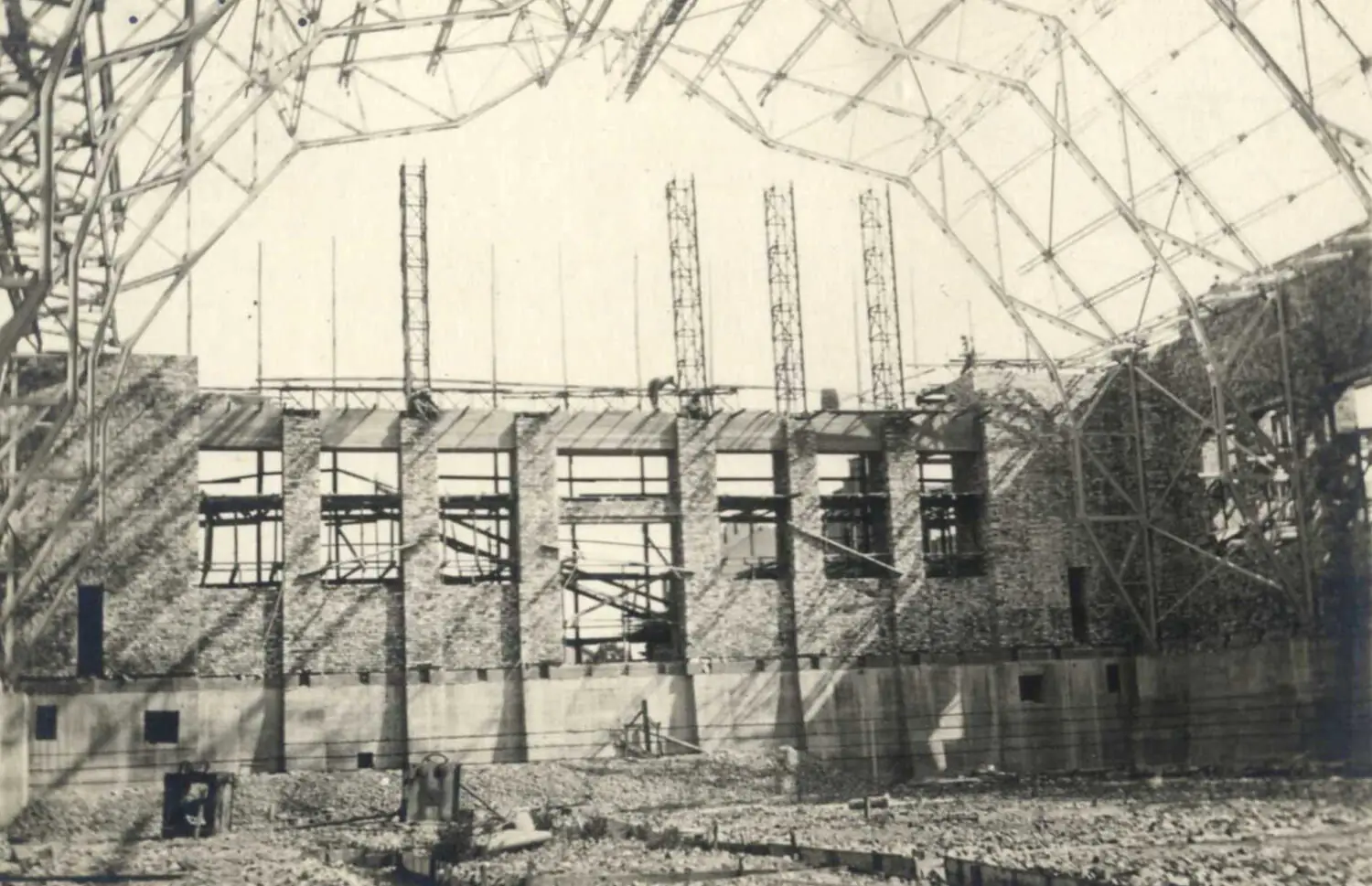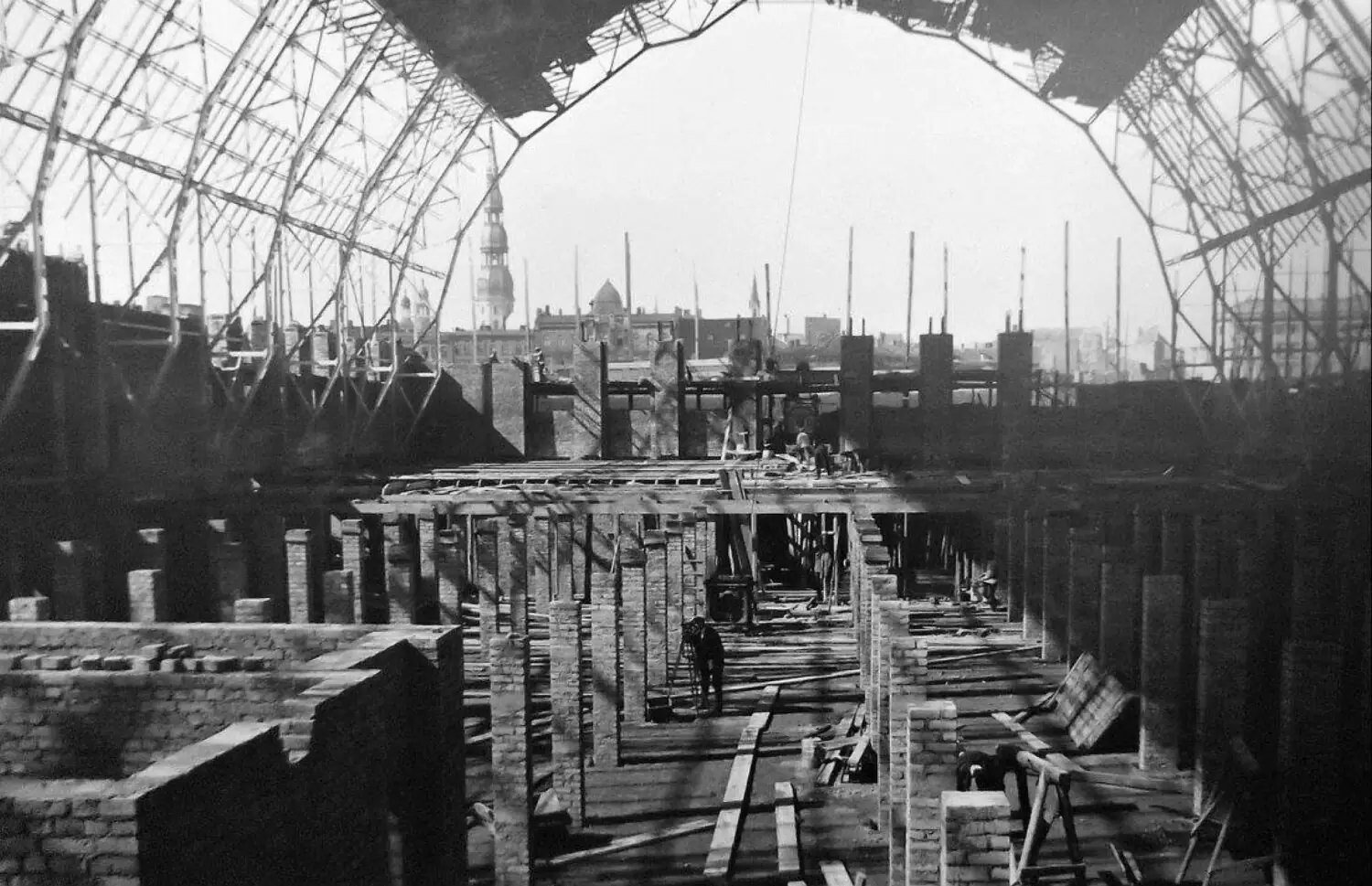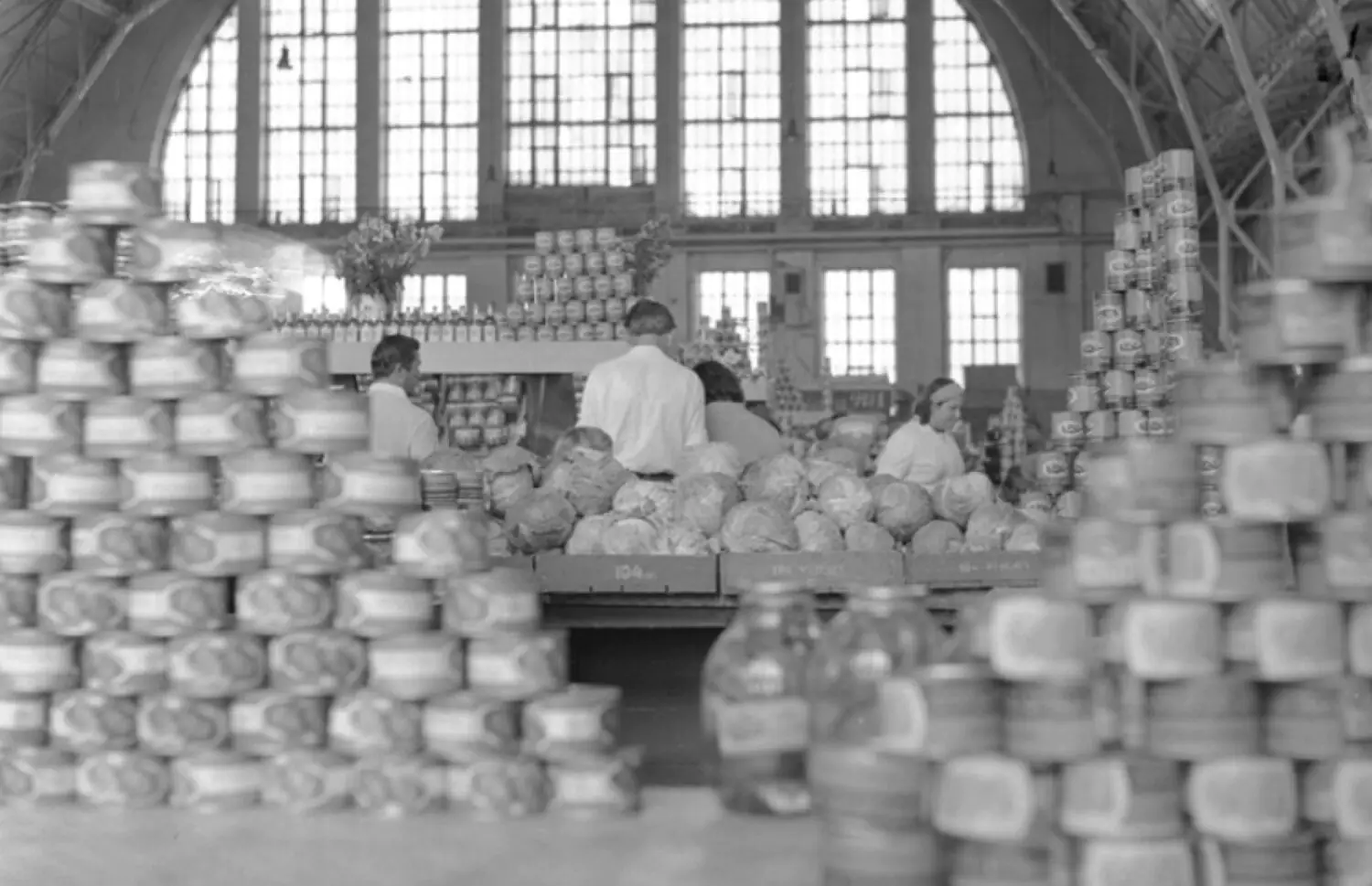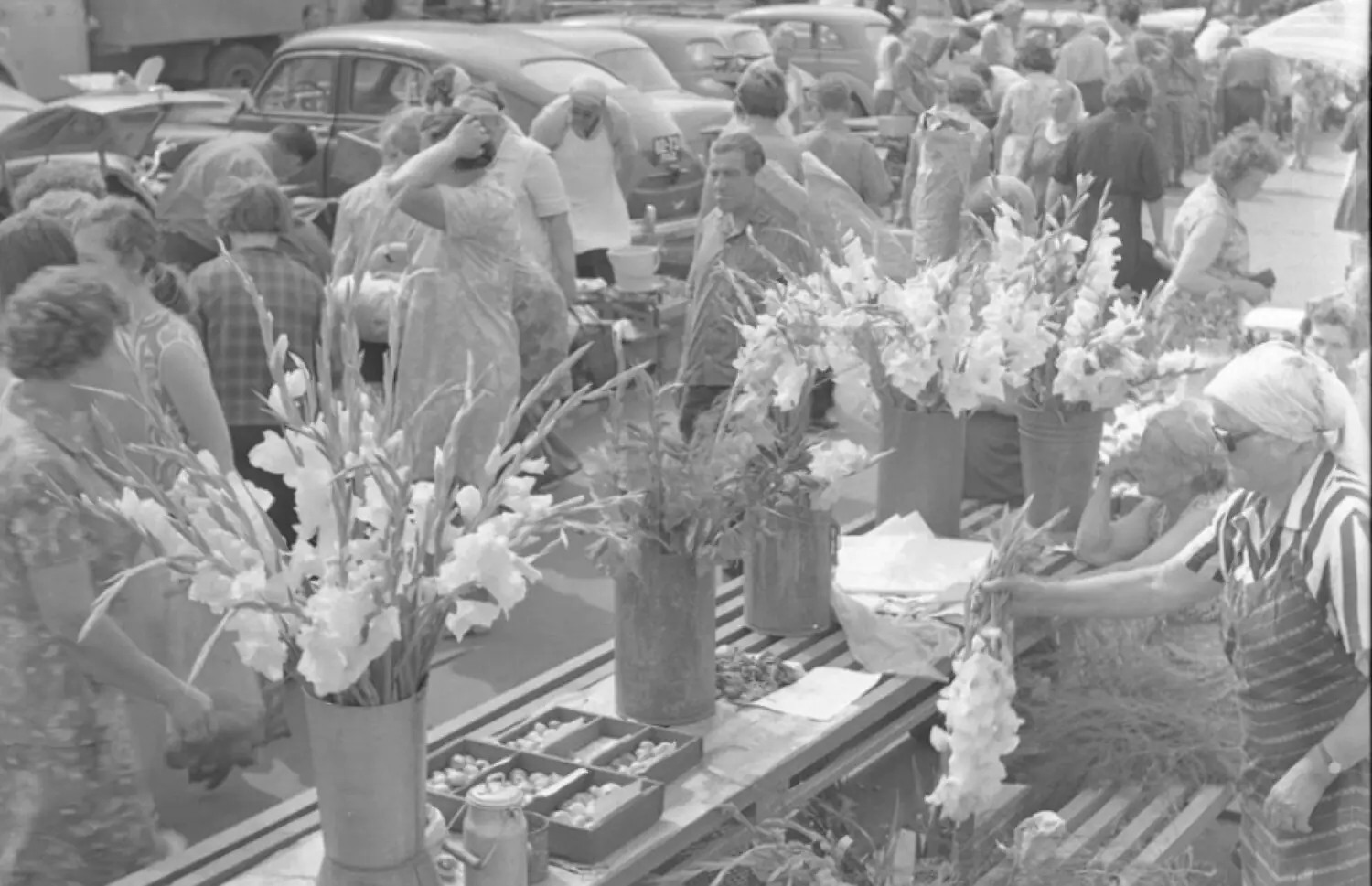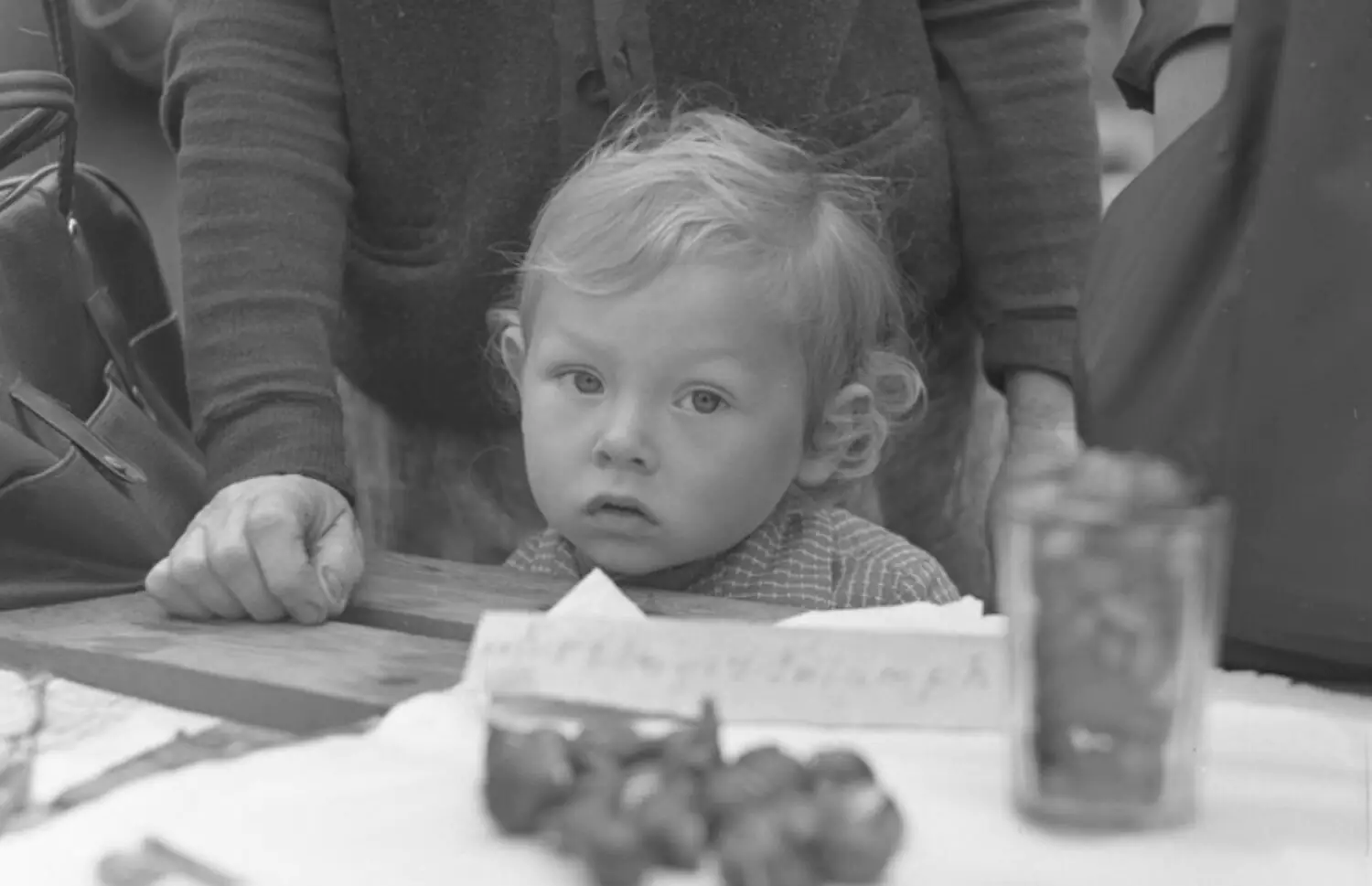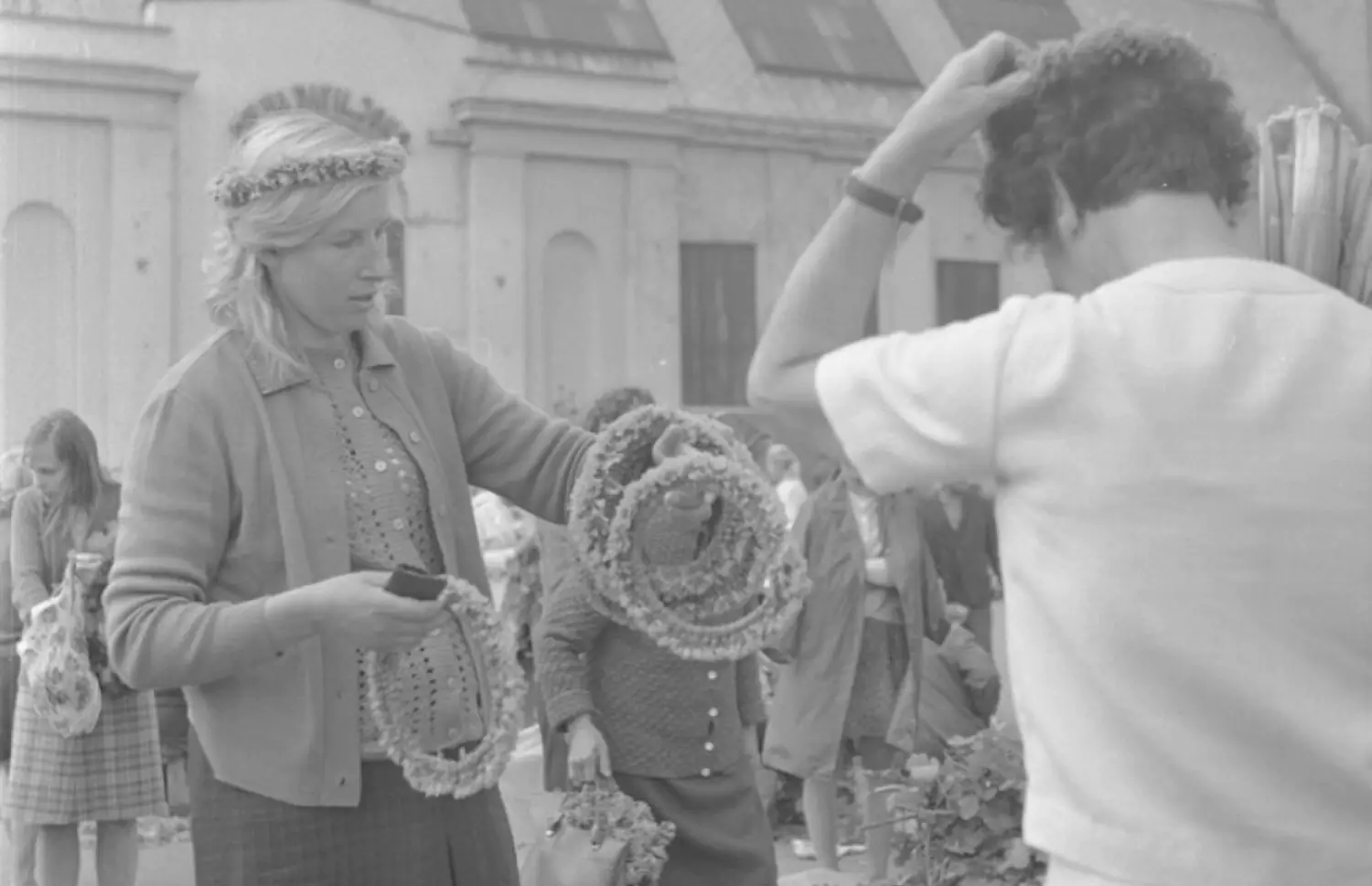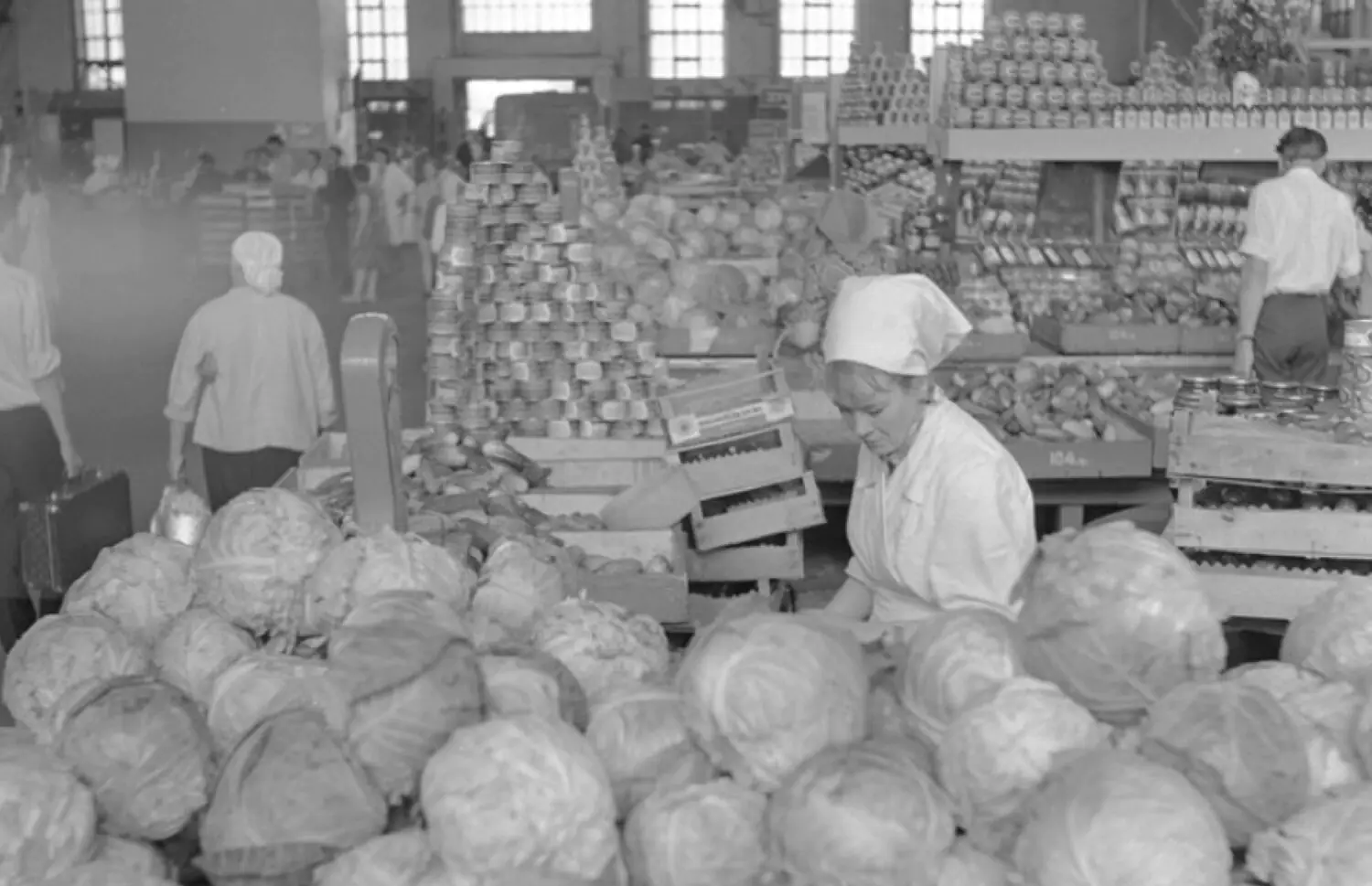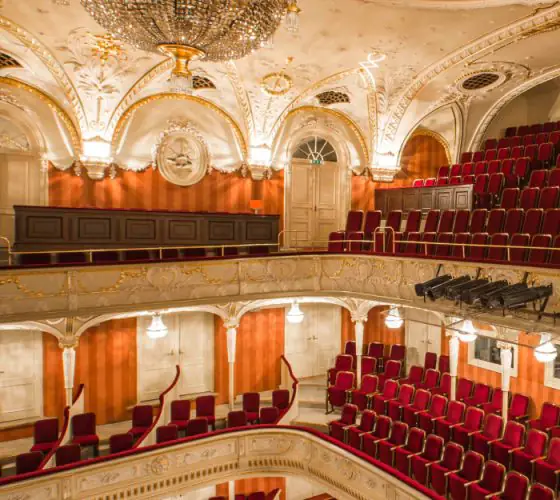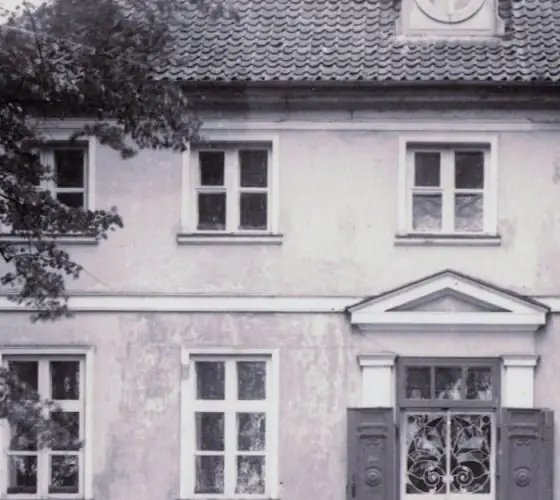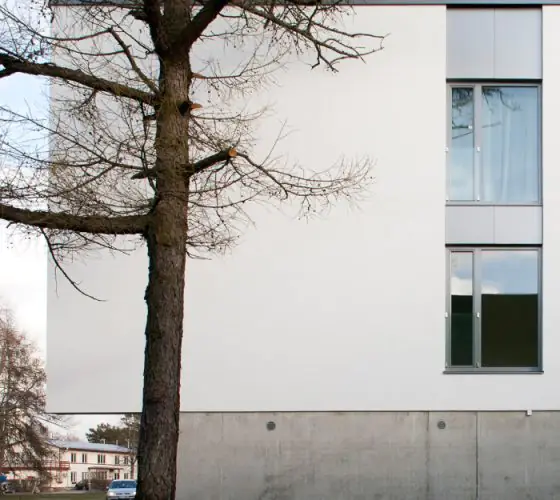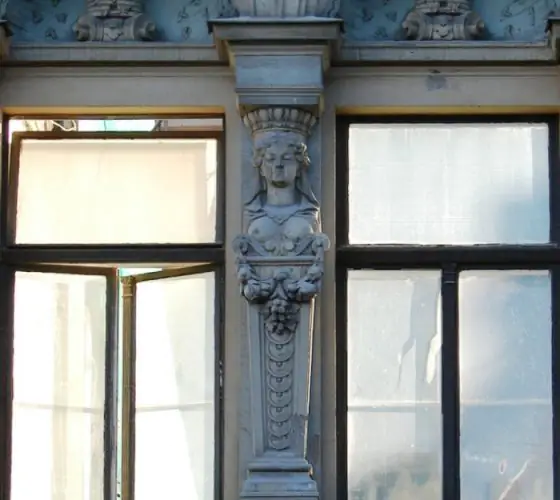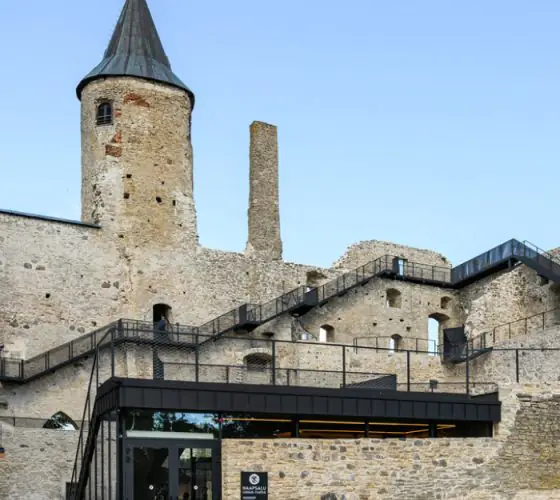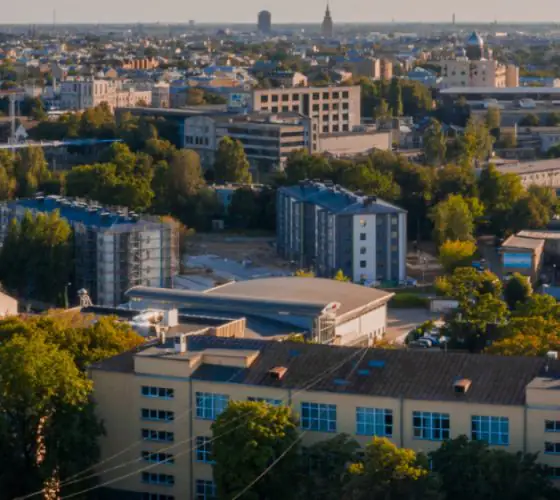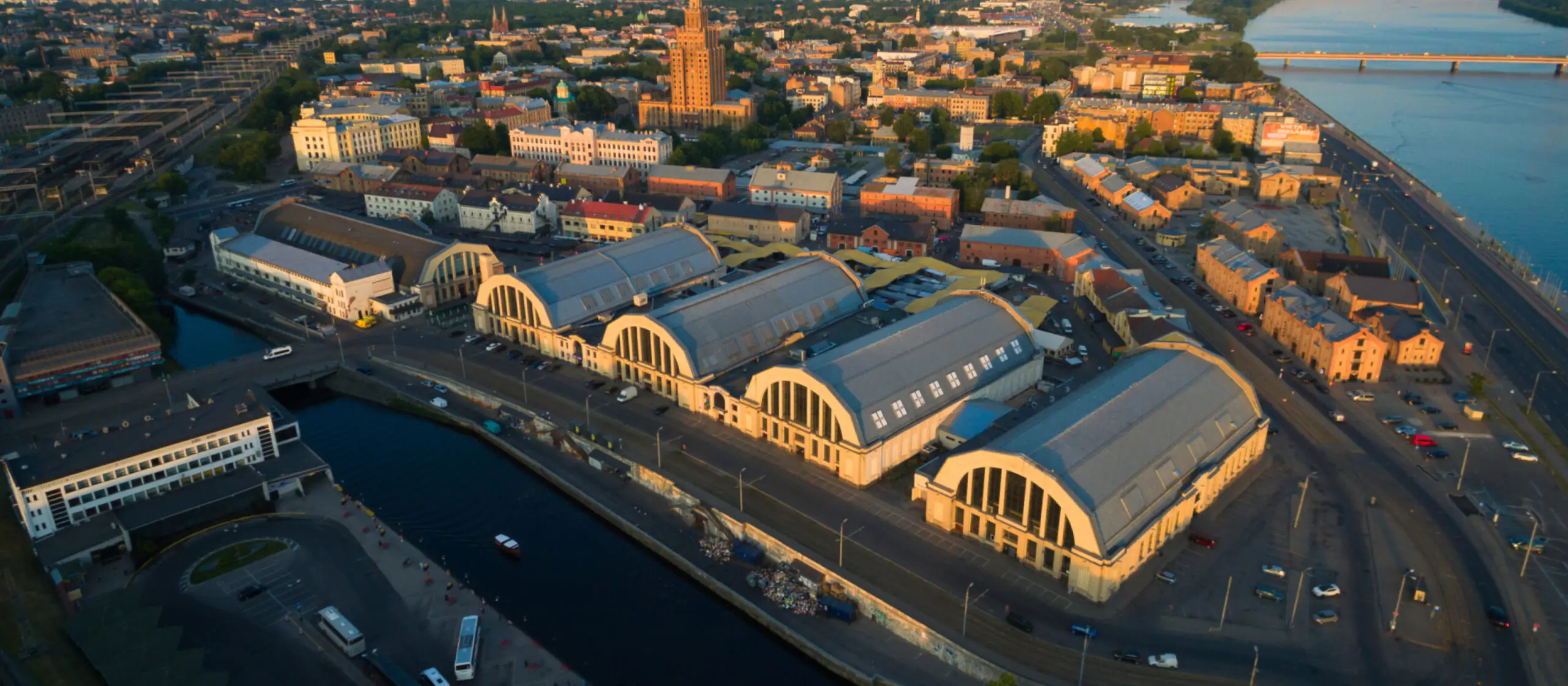
Since the late Middle Ages, Riga’s main city market has been located on the Daugava embankment. This position was logical and convenient for merchants: opposite was the main city port. Nowadays it is known as the Old Riga Port. The city market, first mentioned in written sources in 1572, was often called Daugava market (Daugavas tirgu) or Daugavmalas tirgu. It occupied a large part of the embankment—now it is the 11 November Embankment (Latvian: 11. novembra krastmala) in the Old Town.
The market existed in this place until the 1920s. Back in the 1900s it became clear that the city market had little space on the embankment: it was increasingly difficult to place pavilions here, and delivery and unloading of goods was also difficult. In 1910, a plan to build a new city market appeared, but due to the outbreak of the First World War, its realisation had to be postponed.
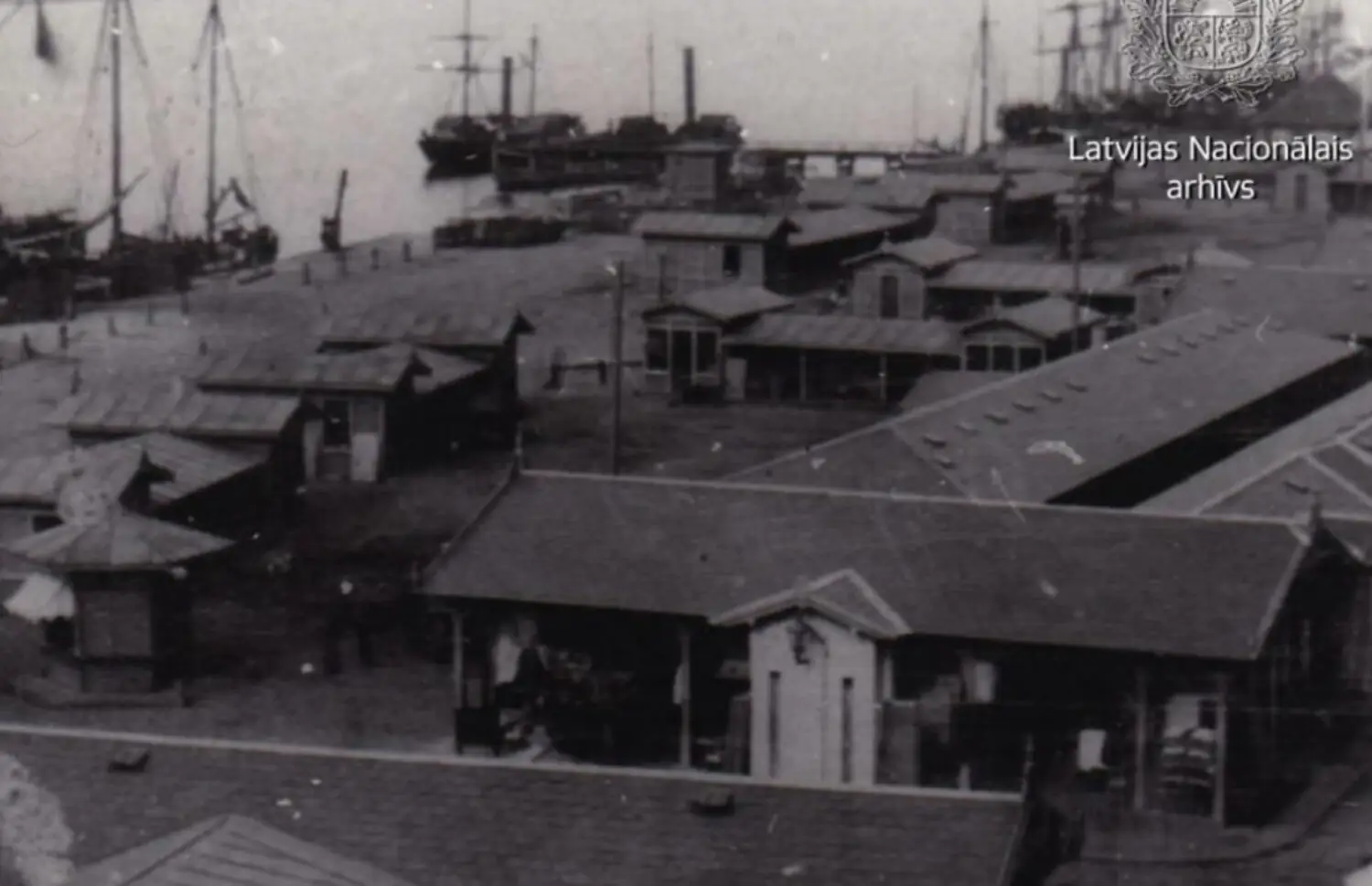

letonika.lv
After Latvia became an independent republic in 1918, Riga was actively changing, and in 1922 the Riga City Council decided to establish and build a central city food market. This idea and its promotion belonged to Klavs Lorents, the head of the Riga City Council’s trade department. By this time there were many small, specialised places with market stalls in Riga, apart from the market by the Daugava River.
To make room for the new Central Market, several warehouse buildings in the Spīķeri neighbourhood were demolished or rebuilt. Riga had already had experience in building market hangars—in 1902, the Vidzeme market pavilions were built. Later, in 1925, the city built the Agenskalns Market, which was built in parallel with the construction of the Central Market, the main character of this text.
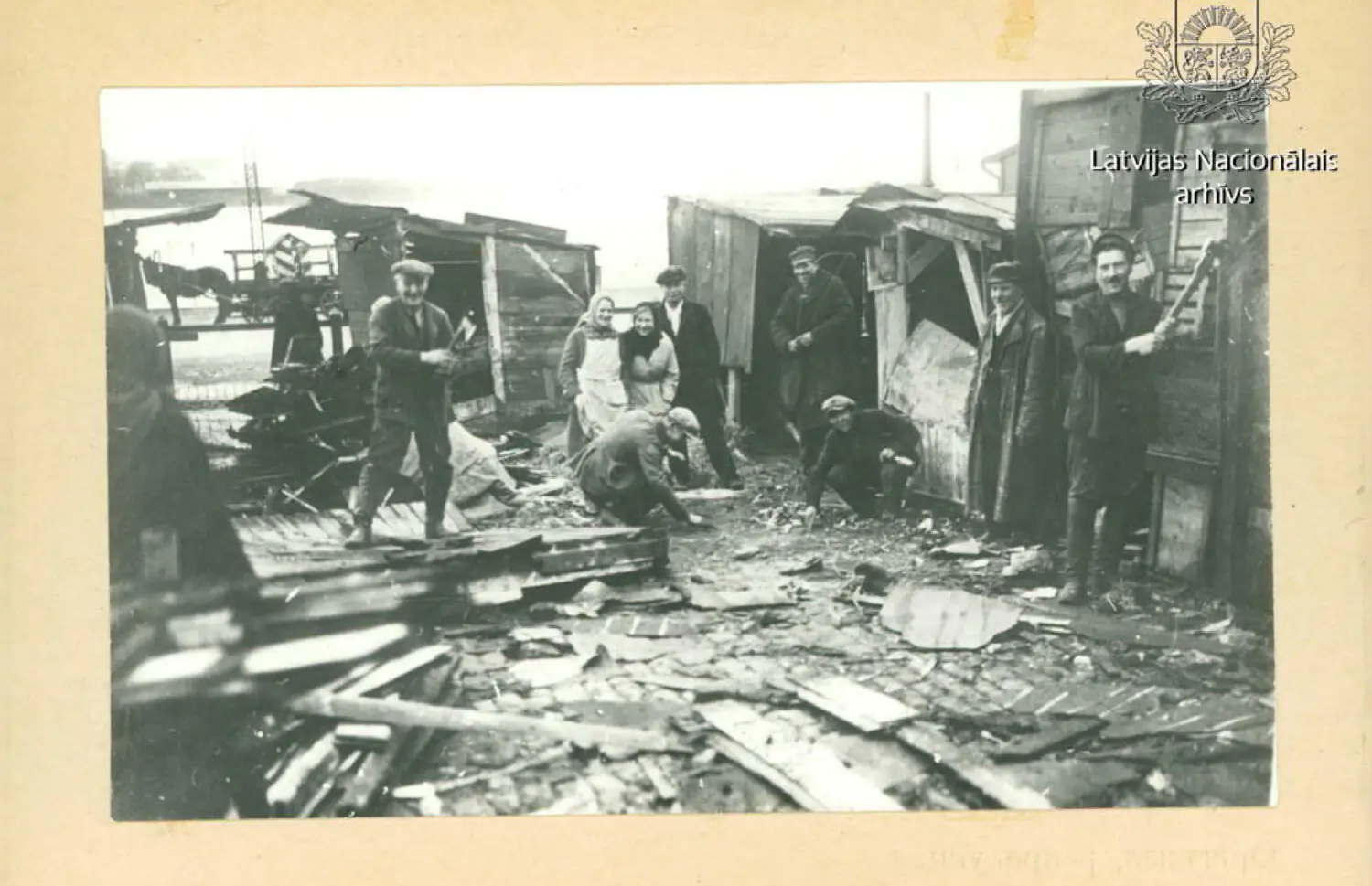
A competition was announced for the building of the new market, but none of the competition projects were approved. However, a special New Market Building Department was created: it was this Department, under the leadership of architect Pavil Dreimanis, that developed the design of the new market, and it was quite an inventive solution.
The market was built using metal frames from zeppelin, or airship hangars: these buildings were left over from the German army in the town of Vainode in south-west Latvia after the First World War. They were then used by the Iron Division (Dzelzsdivīzija), a volunteer association that existed from December 1918 to December 1919 and was dissolved. After that, the facilities were empty: they were no longer needed because the fighting had died down and the airships used for reconnaissance were no longer needed either.
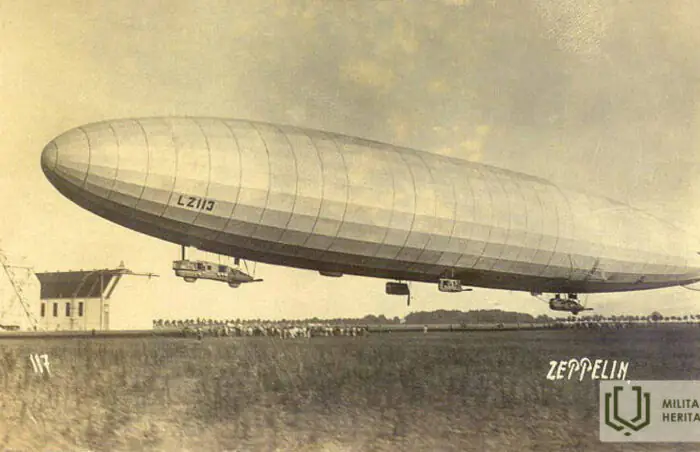
Archive of Latvijas Kareivis
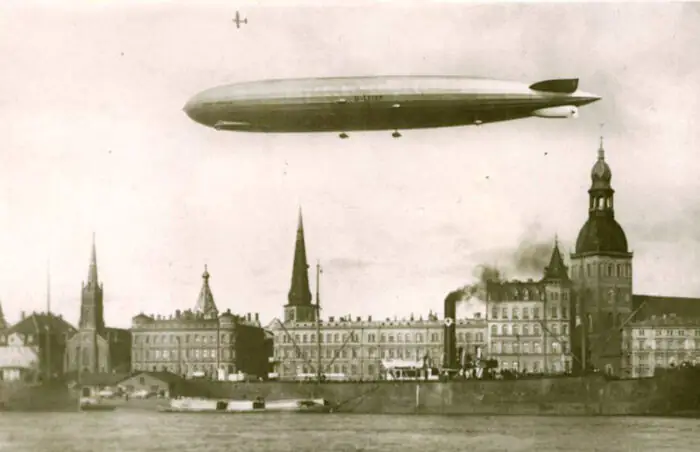
Archive of Latvijas Kareivis
It is known that the hangars were called “Valhalla” and “Walter”. The project to reuse their structures was approved, and students of the University of Latvia started to develop it. It is known that engineers G. Tolstoy and V. Isaev were the direct executors, and architect P. Pavlov was the organiser of the work (but we do not even know the full names of these people).
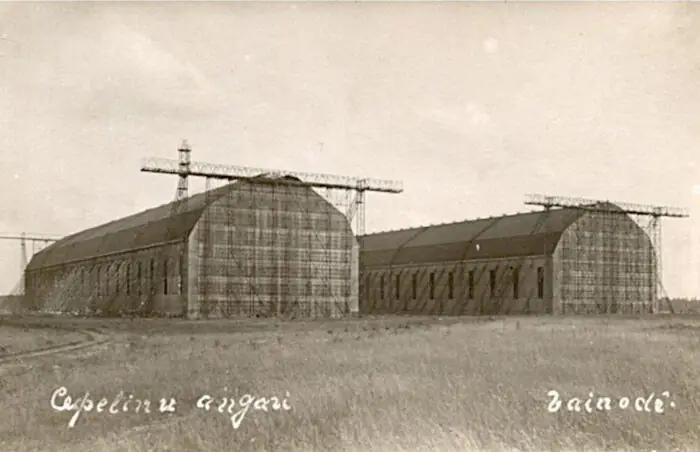
Photo: Guns Edwards
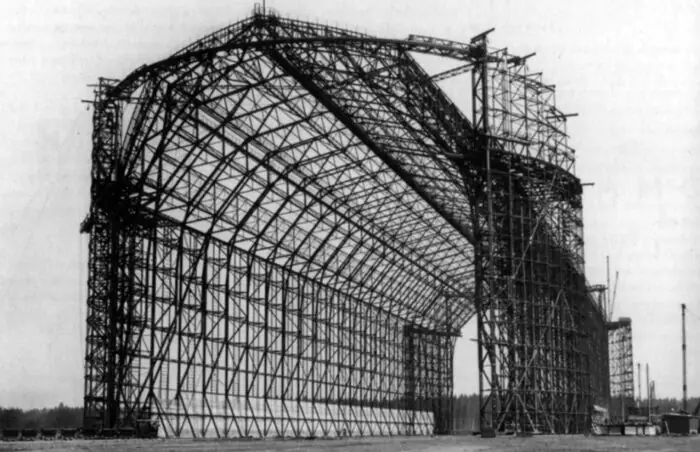
Photo: Guns Edwards
The two identical hangars were 37.4 meters high, 47.2 metres wide and 240 meters long. Initially, the plan was to keep them as they were: to dismantle the steel structures, transport them to Riga and reassemble them. But the height of the hangars did not meet the objectives of the market premises: it would have been difficult to heat the spaces that were too high. As a result, the team decided not to use the entire steel frame, but only the upper parts with vaults—these elements became the structural trusses in the new market pavilions, which made it possible to cover a large space without additional supports, while the walls of the market pavilions were built of reinforced concrete and brick.
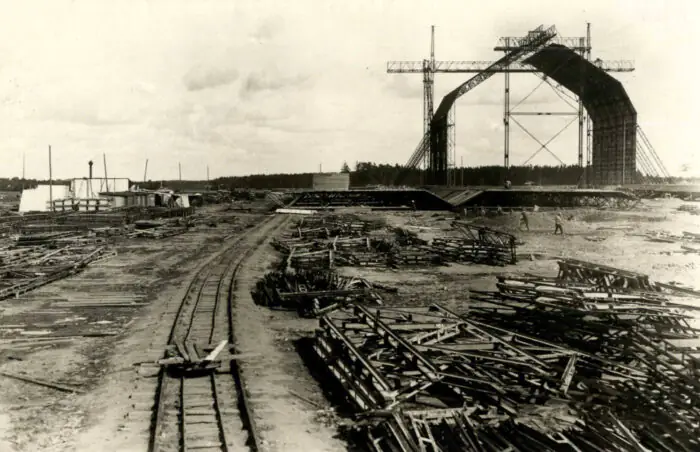
Latvian State Historical Archive
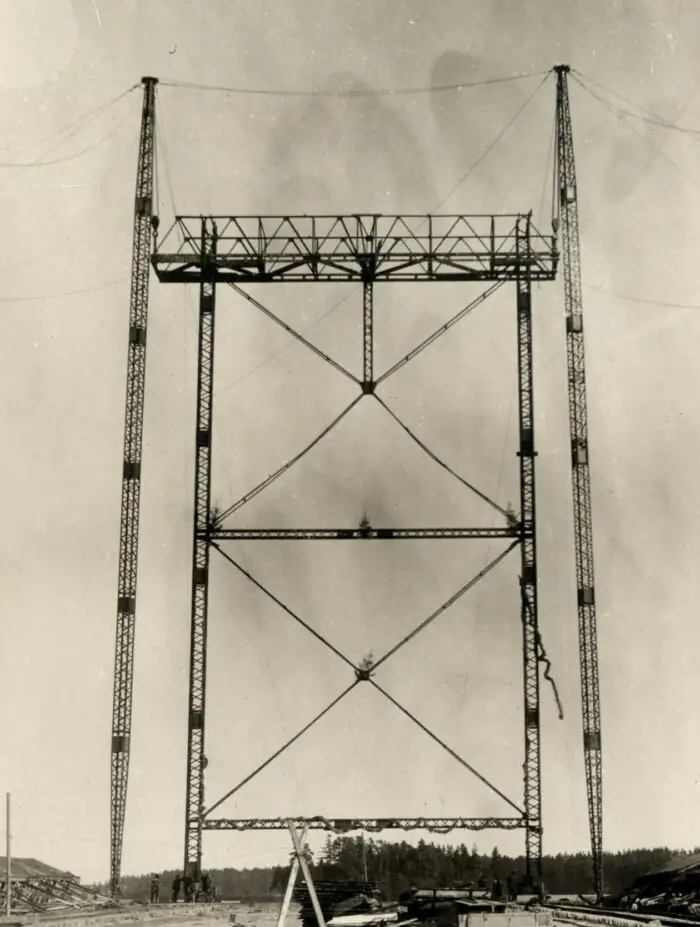
Latvian State Historical Archive
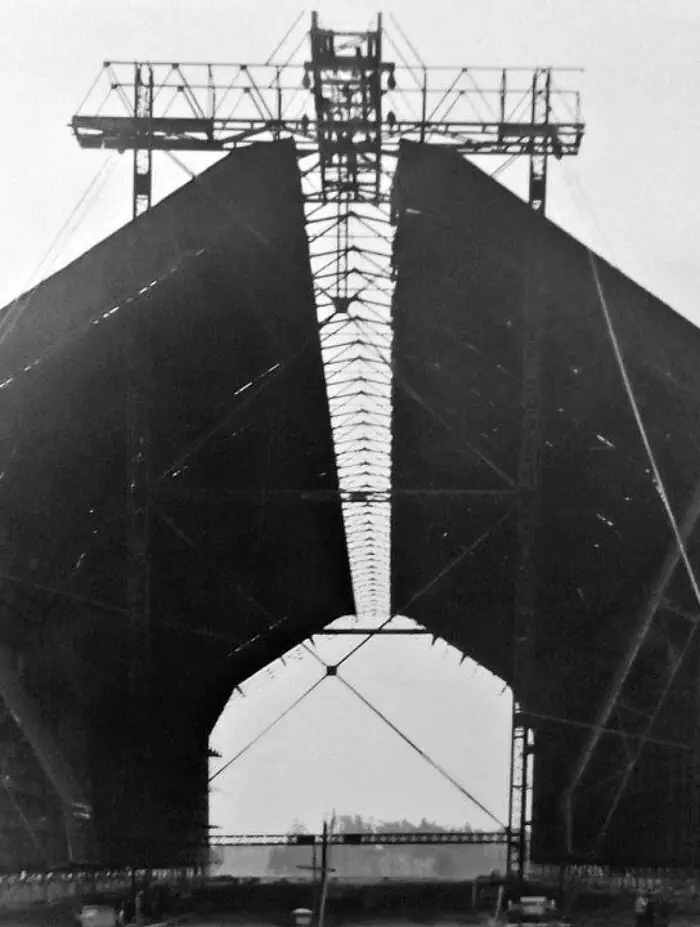
1924–1926
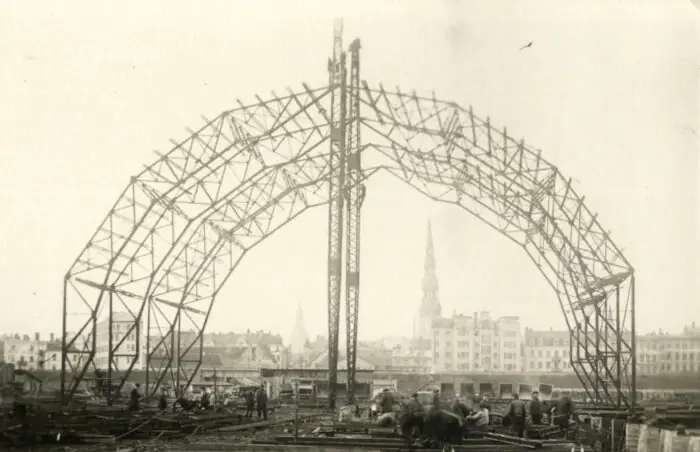
Latvian State Historical Archive
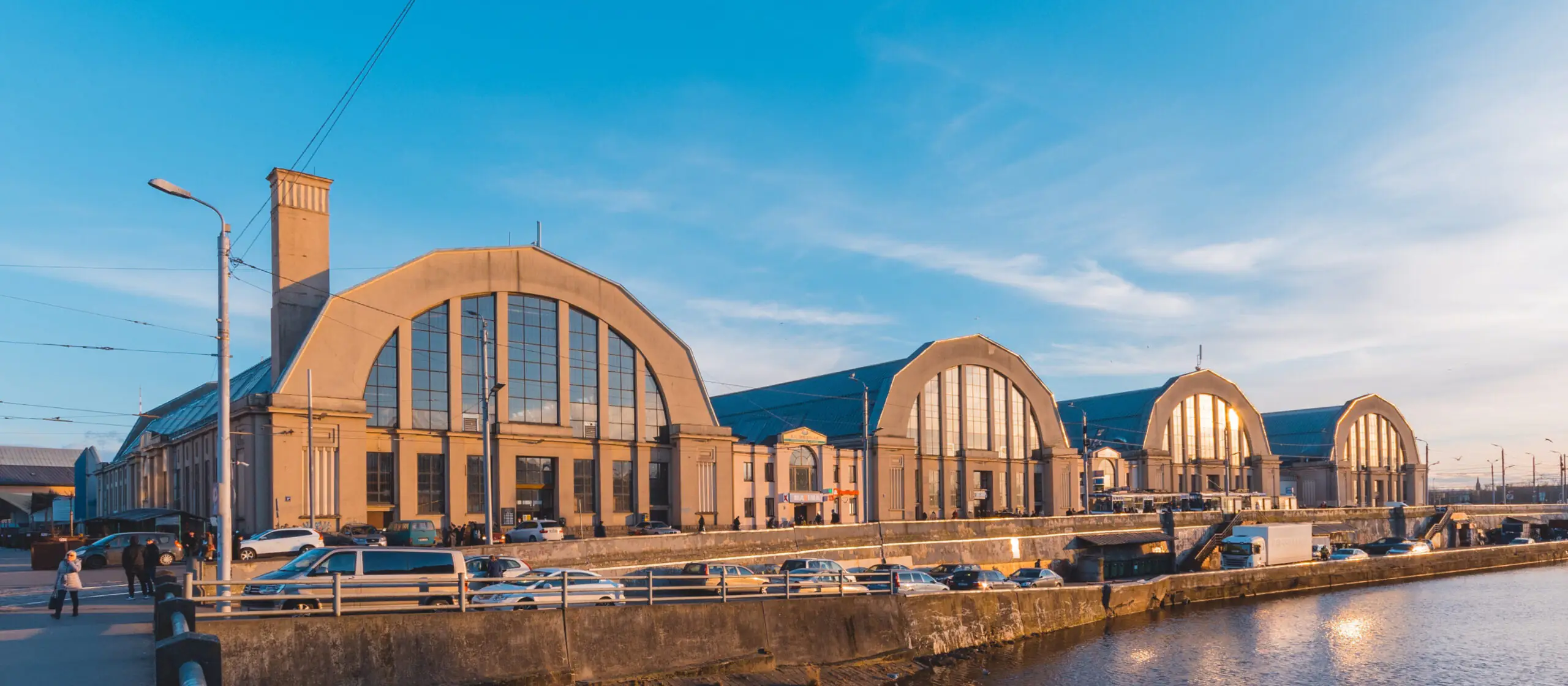
Construction work on the Rīgas Centrāltirgus began in June 1924 with the demolition of two rows of warehouse buildings in the Spīķeri neighbourhood. The project envisaged five pavilions: the largest (5,000 m2) was intended for wholesale trade and meat processing, and the smaller ones, each with an area of 2,592 m2, for retail trade. After structural adjustments, the halls were 20.5 meters high and 35 meters wide. This huge complex took 6 million bricks, 2,460 tonnes of iron and 60,000 barrels of cement to build.
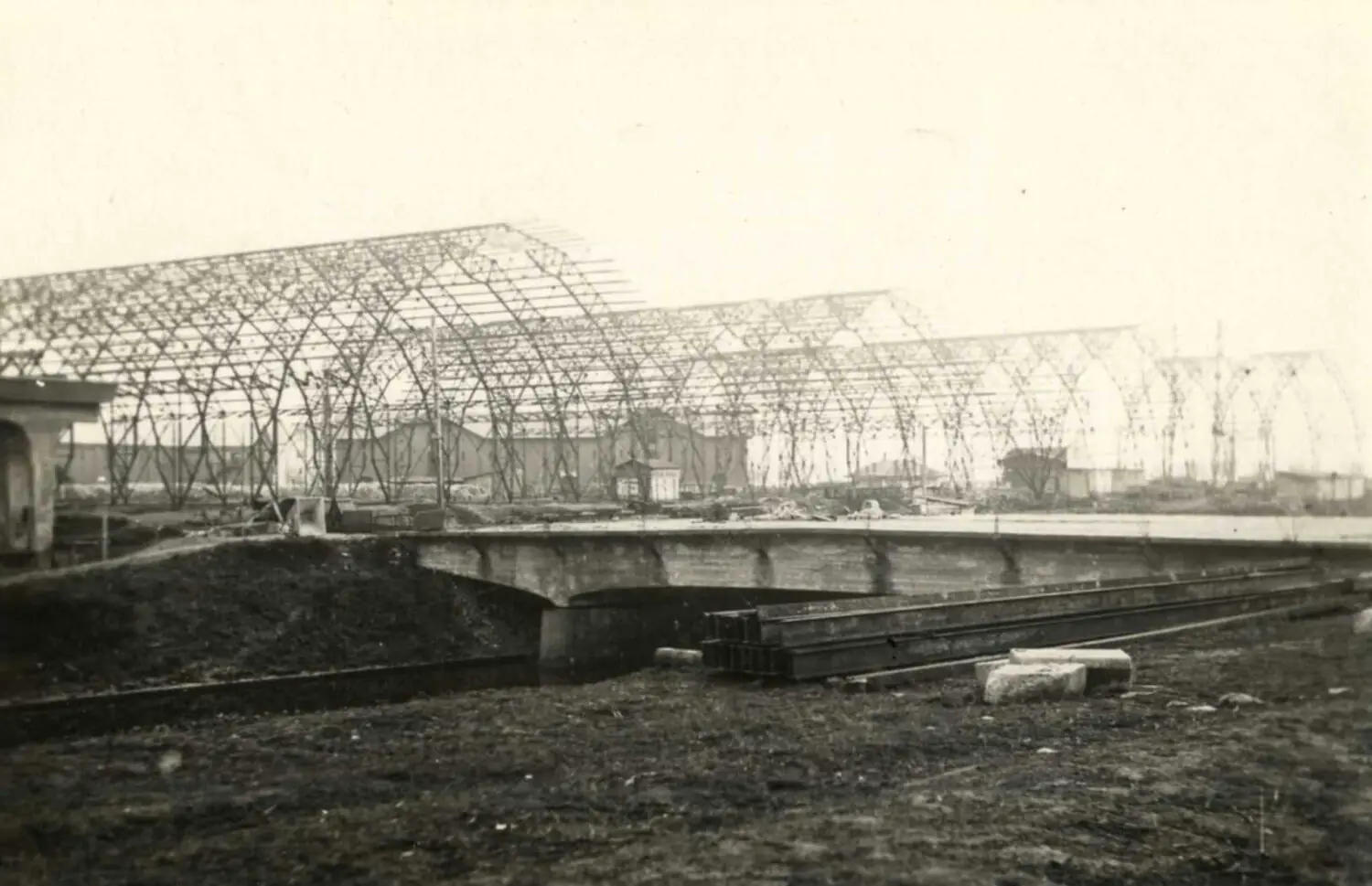
1924–1926
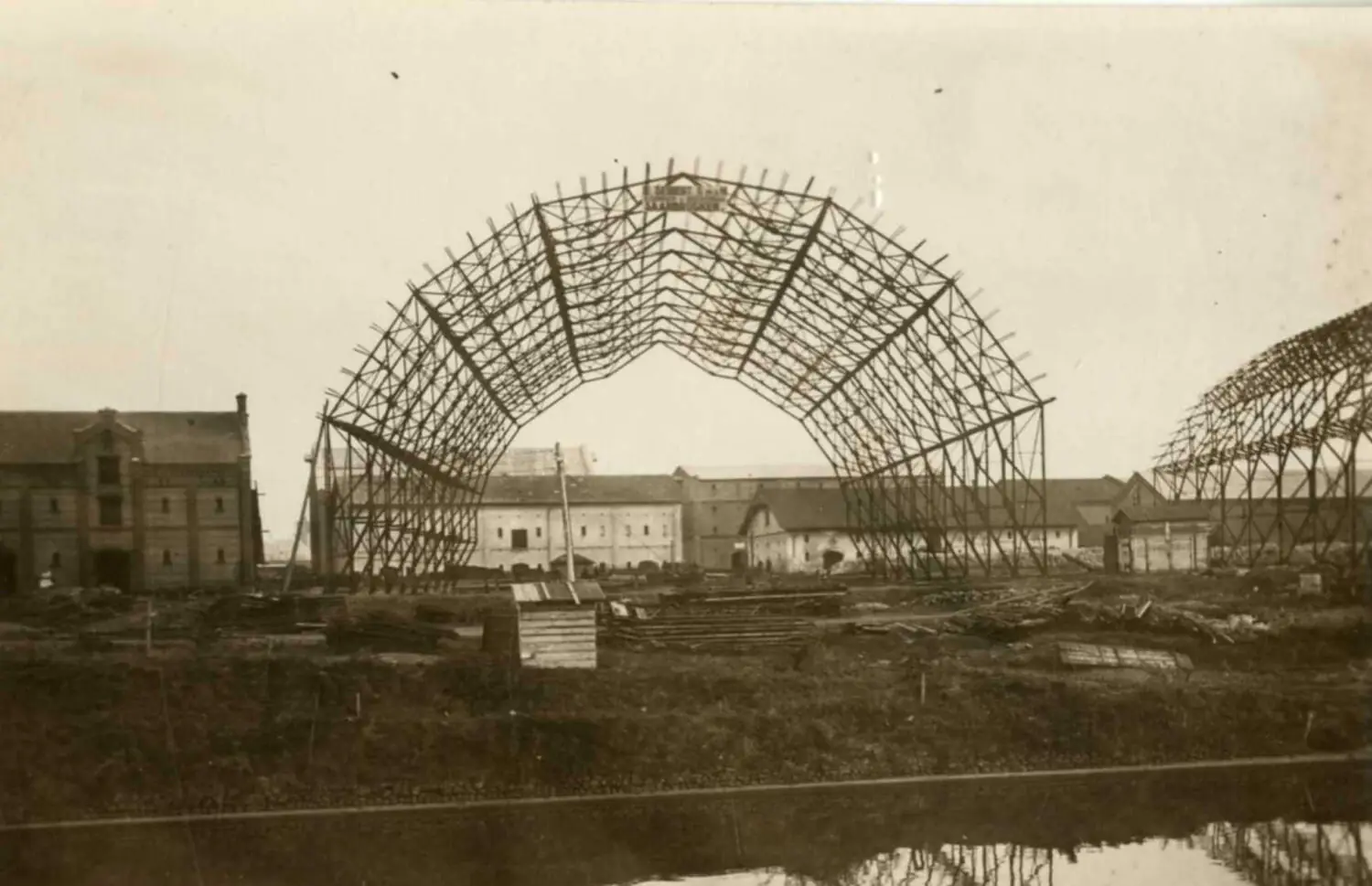
Latvian State Historical Archive
In parallel, in 1925, the dismantling and transport of the metal frame from Vainode to Riga took place. Due to the impressive size of the German hangars, they required serious equipment and precise calculations. Sometimes failures occurred: for example, in his book about the Central Market, Eric Hanberg quotes technical documents related to the demolition of the hangars: “Stars had completely failed to take into account in the preliminary calculations the possibility of overloading the metal. […] the sudden release of the cable caused a violent jolt, which caused the half-section to fall inside the hangar.” Several workers were injured. However, this was the only serious case where something went wrong because of incorrect calculations.
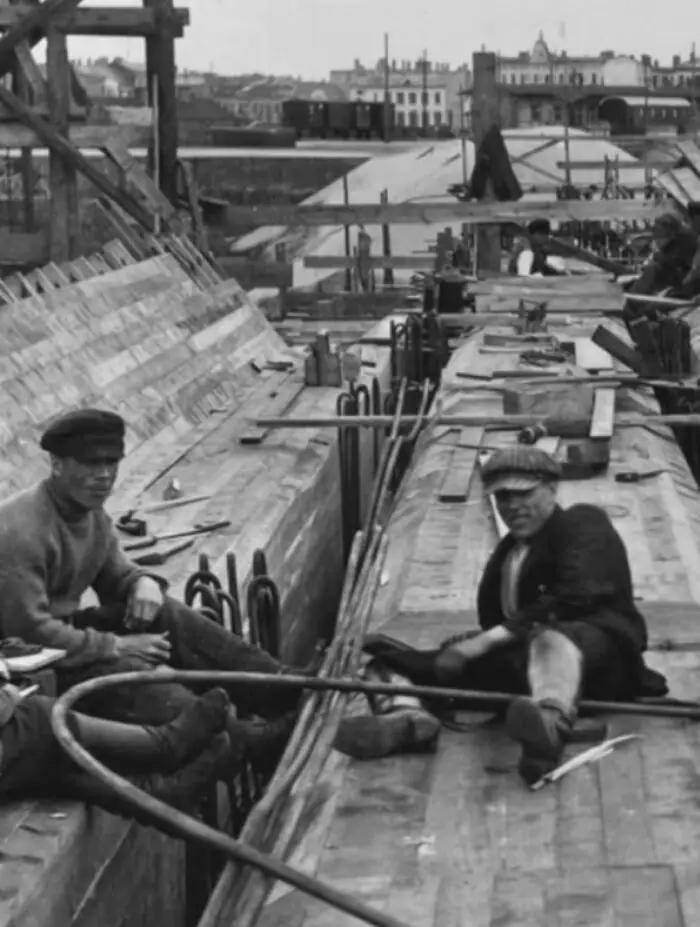
Between 1925 and 1929
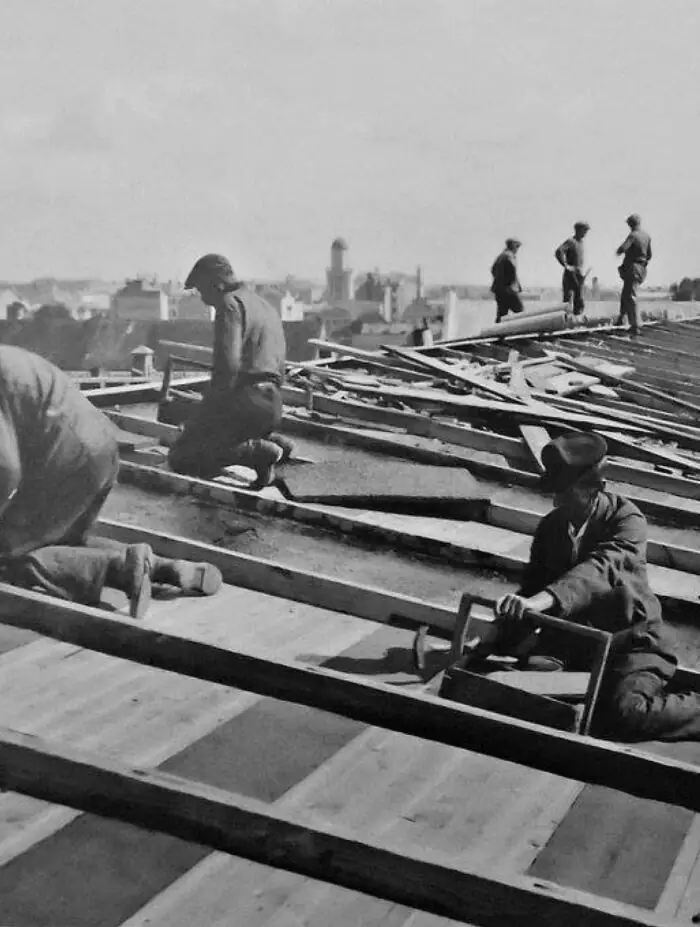
Between 1925 and 1929
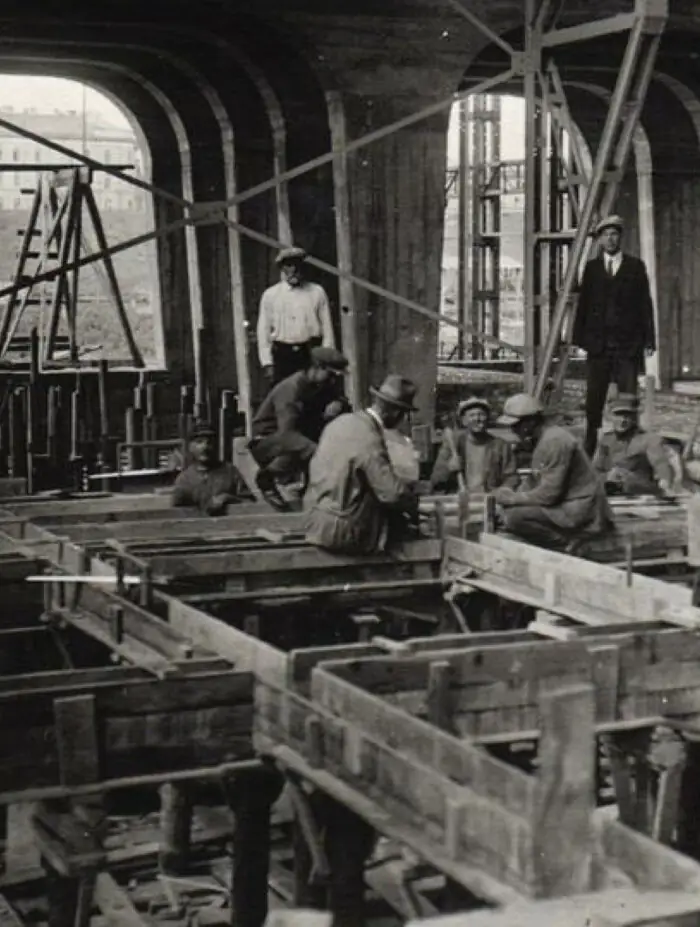
Second half of the 1920s
In 1926, during construction, it became clear that several changes and additions had to be made to the original project, which exceeded the planned project costs—the work was suspended. The construction of the market was resumed only in spring 1928 and was completed in autumn 1930: on 2 November the market was ceremonially put into operation.
The pavilions, which were built for several years between the two world wars, turned out to be interesting from the point of view of architectural aesthetics: their forms managed to absorb both features of rational (vertical) Art Nouveau and Art Deco.
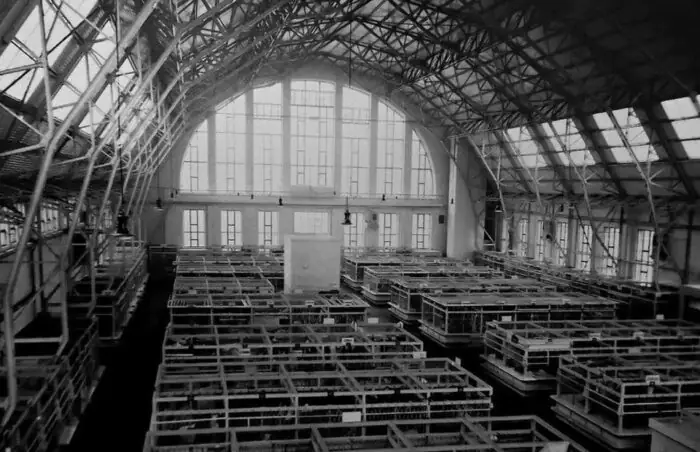

The new market was very modern for its time: all buildings had central heating and electric lighting. A low-pressure steam heating system was used to provide these—it operated until 1986, when the market was connected to the city’s central heating system.
The market pavilions contained large refrigeration units with 1,258 m2 of freezer space, lifts for transporting goods in all hangars, impressive warehouses and cellar entrances that provided vendors with easy access to all pavilions.
It was planned to transport goods to the new market by water through the City canal (Pilsētas kanāls) and by railway. A virtually underground city of 2 hectares was built under the market: passages with tunnels led to quay platforms on the canal side, from where goods could be easily transported to the market warehouses and freezers in the cellars.
They even started building a railway trestle near the wholesale pavilion opposite the canal, but it was not finished. It was planned to extend the railway line to the last pavilion—the basement under the market was so far away. However, the railway project was never completed: the Second World War interrupted its construction. The apron and a landing stage for unloading goods between the canal and the modern Meat Pavilion have survived to this day. Today this place is empty.
To make it convenient for shoppers to get to the market, a tram ring was built nearby, and two bridges were built over the canal.
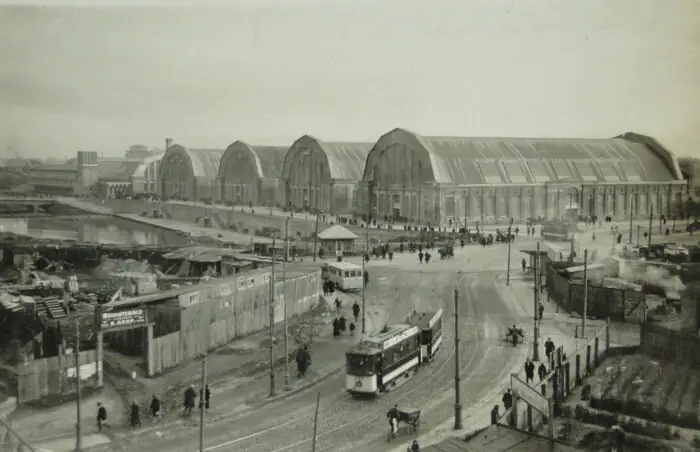
zudusilatvija.lv
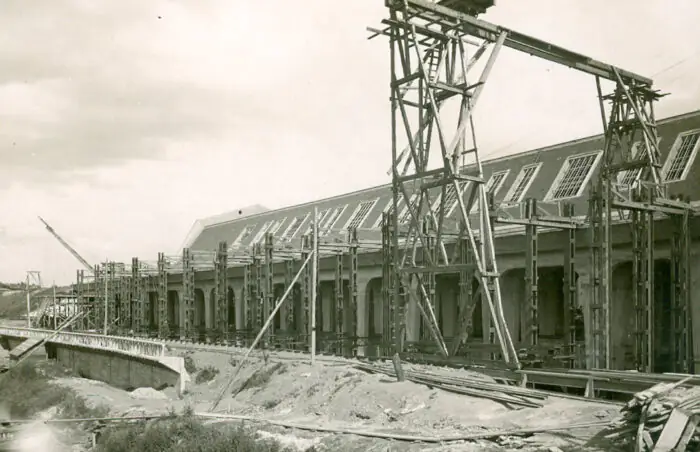
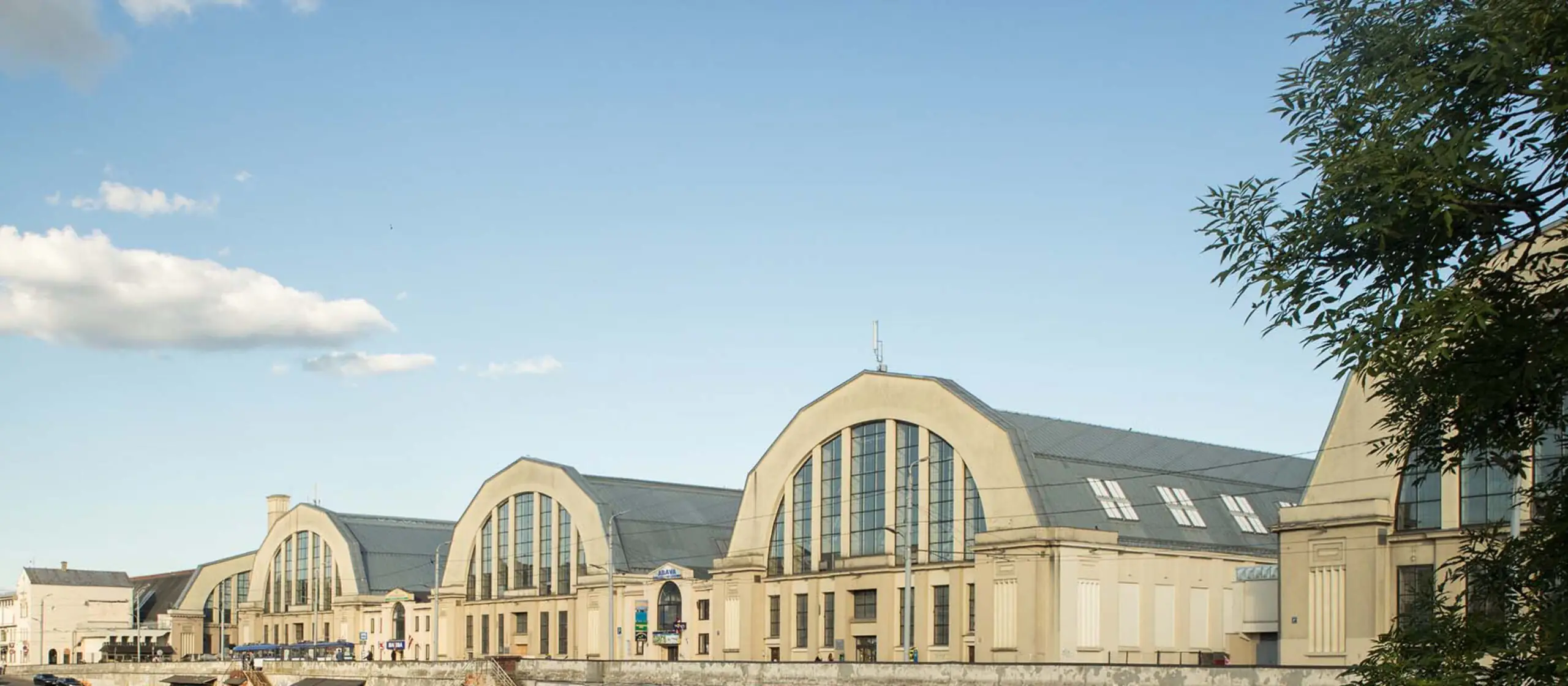
Even before the final commissioning of the market and the appearance of market stalls, the pavilions began to host exhibitions: for example, the 10th anniversary exhibition of Latvian schools in 1929. Until the autumn of 1930, the pavilions were actively used as a variety of exhibition spaces: the III International Automobile Fair was held in the two market pavilions – the light and spacious hangars were the only easily accessible spaces in Riga at that time. Soon, from 10 to 12 May, the pavilions hosted an exhibition organised by the Latvian Hunters’ Association.
The premises were also used for political meetings: on 6 and 13 April 1930 mass meetings of the LSDPS were held here, and on 18 May a meeting of the Workers’ and Peasants’ Faction was held here.
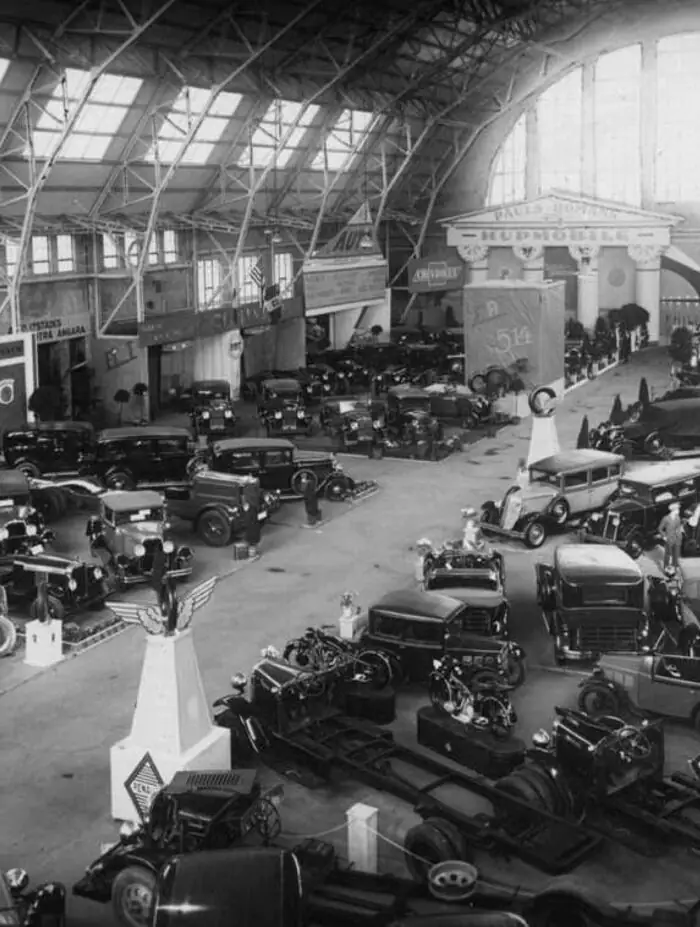
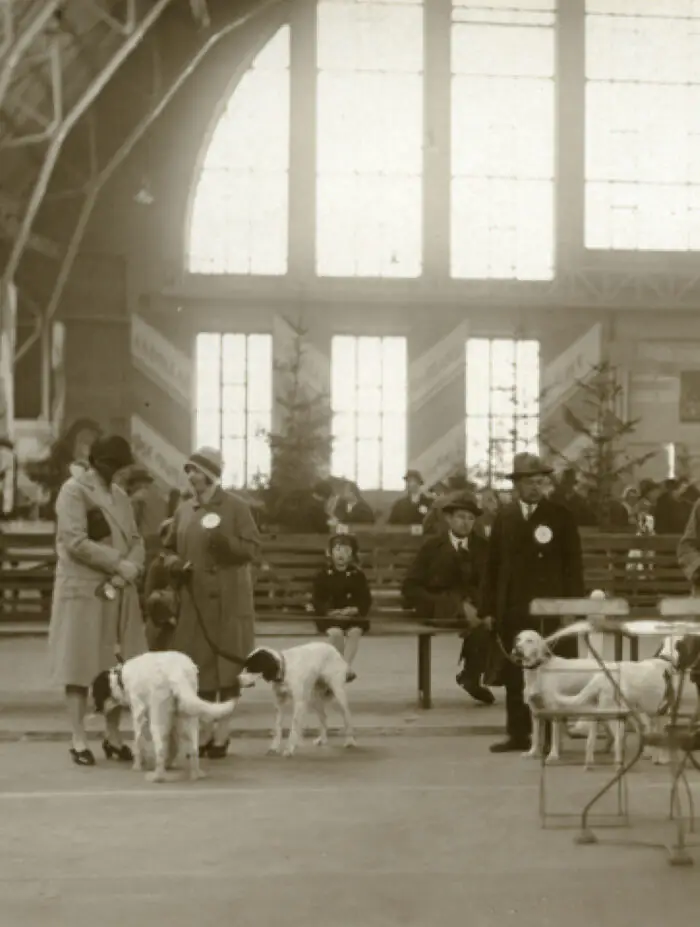
Photo: Vilis Ridzenieks, 10-12 May 1930
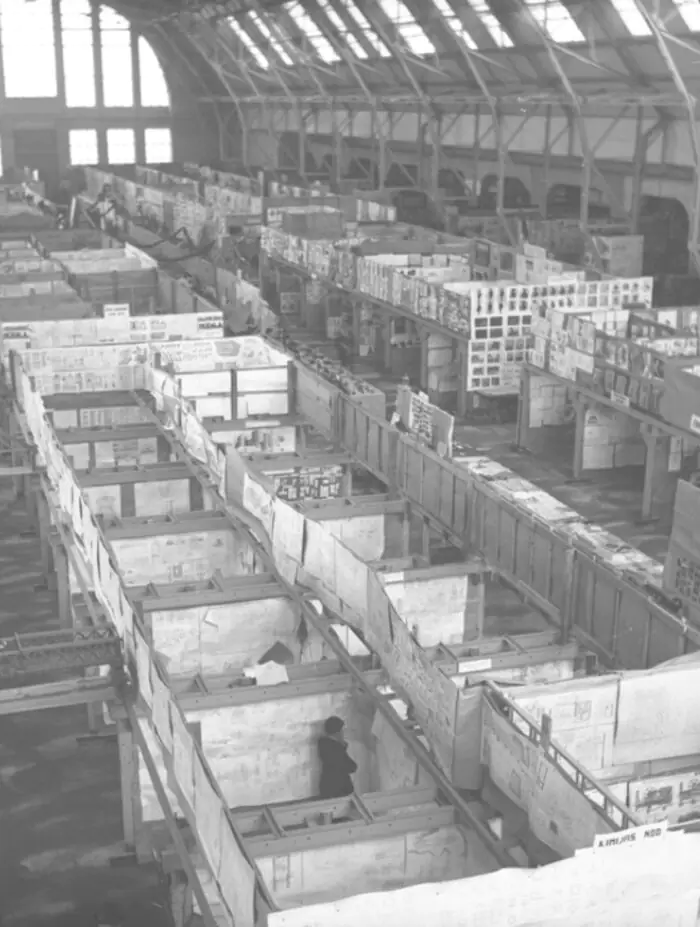
Photographer: Peteris Shmits, Rīgas vēstures un kuģniecības muzejs
Food sales at the Rīgas Centrāltirgus began on 10 November 1930. It is believed that at that time Centrāltirgus was the largest and most modern market in Europe.
The central market was three times bigger than Daugavmala market, the historical Riga market, which we described at the beginning of the text and which supposedly existed on the Daugava embankment for about five centuries. A considerable part of the market area was occupied by administrative premises, warehouses and cellars. Traders were allocated an average of about 4m² of selling space, which cost them up to LVL 165 per square meter.
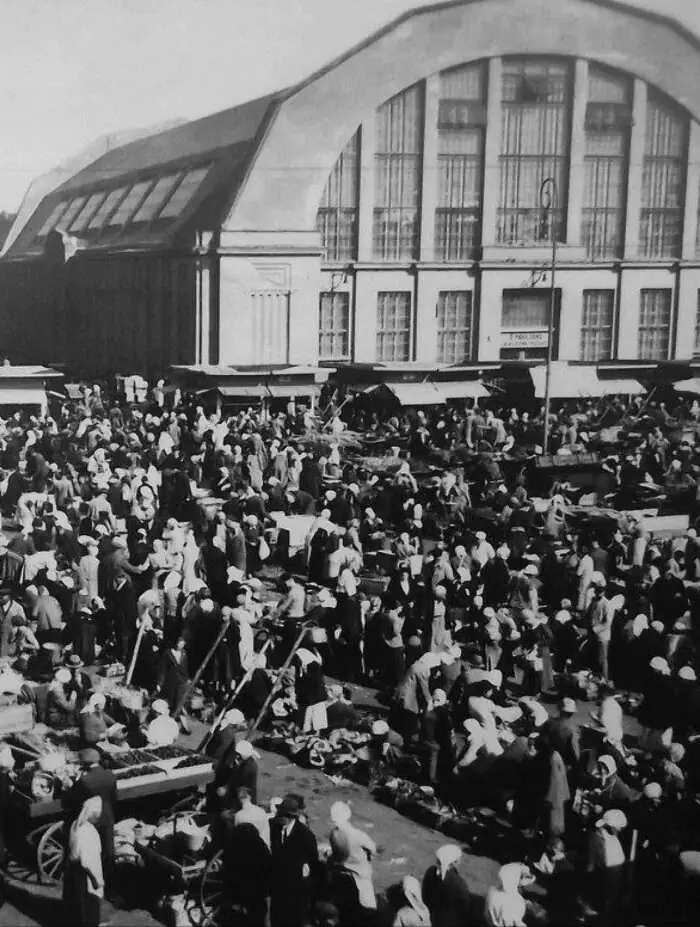
Photo: Konstantin Kok
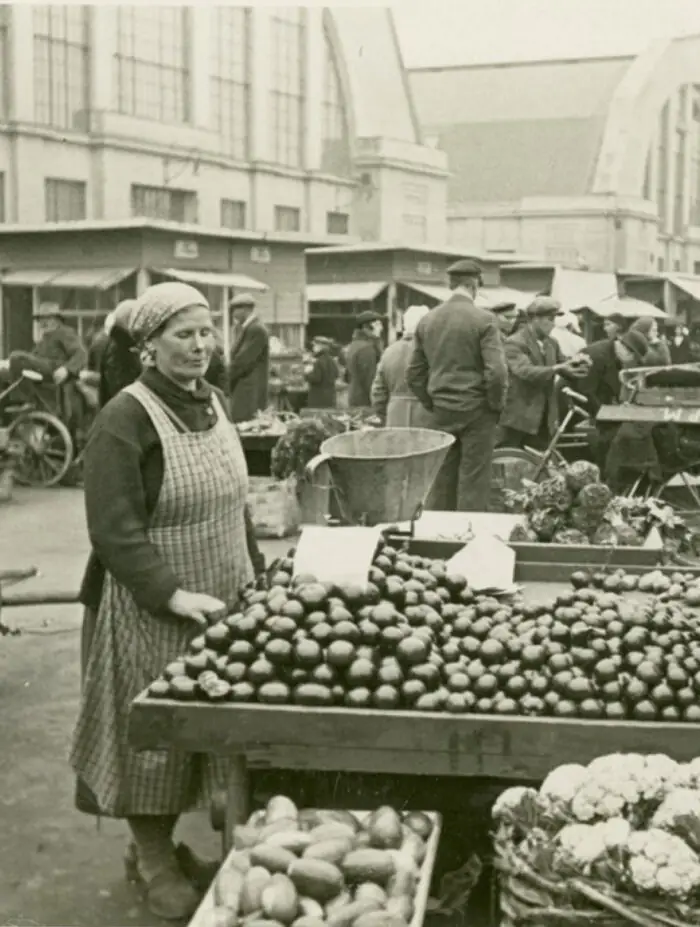
Photo: Konstantin Kok
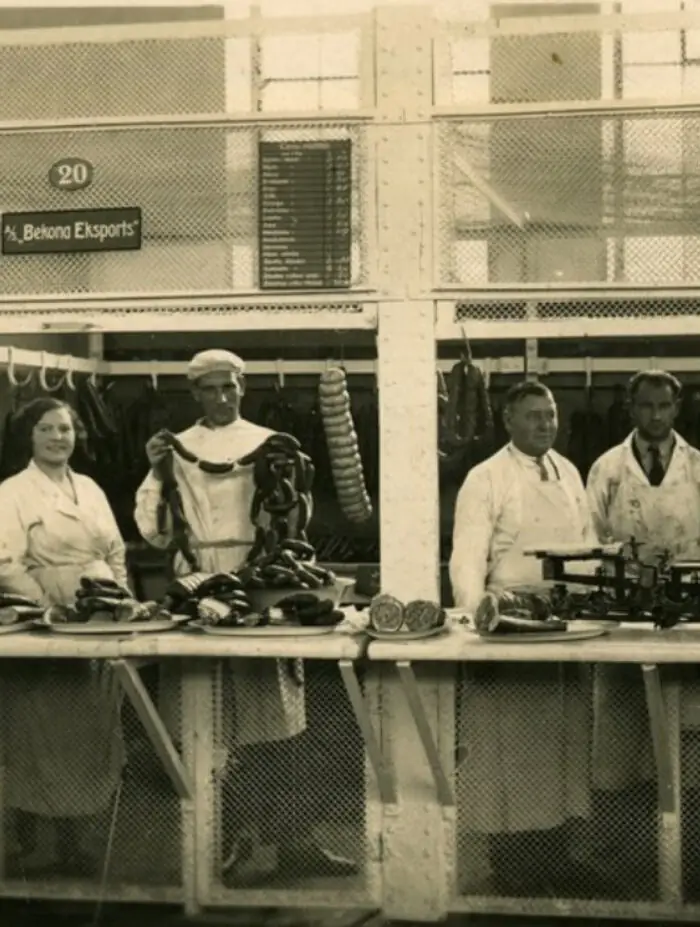
Meanwhile, other commercial premises in the city could be purchased for 20 lats per square meter, and space in the Vidzeme market for 80 lats per square metre. Small traders, who could not afford to rent new premises, and wholesalers, who had nowhere to place their employees and goods, were also dissatisfied. Refrigeration chambers and warehouses were also characterised by high rents. Because of all this, the prices for food at the Central Market were higher than in other parts of the city and were constantly rising—visits there were also unprofitable for customers.
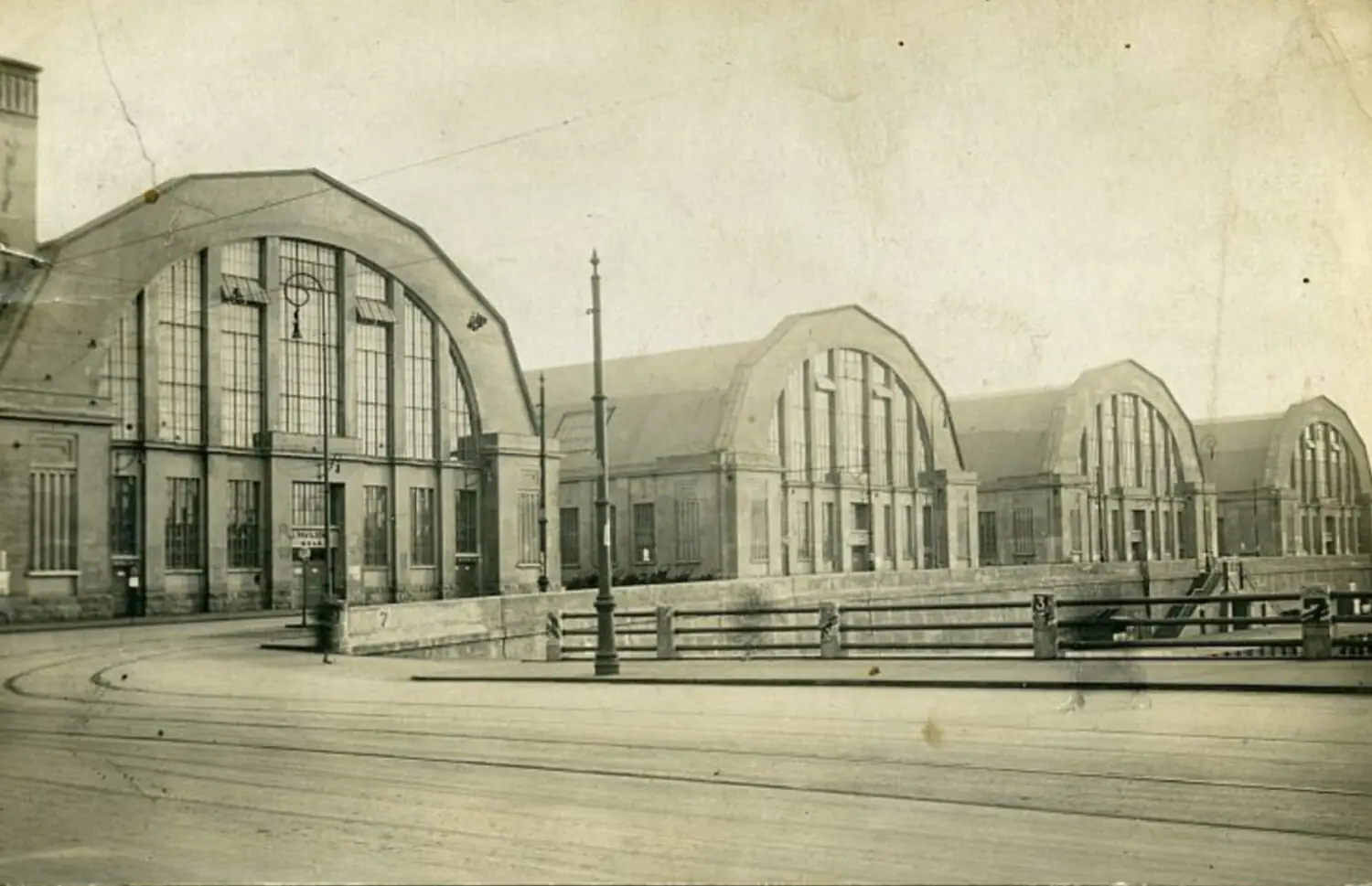
zudusilatvija.lv
In order to solve the problem of inaccessibility of the market for rural traders who could not rent space in the pavilions, an open area of about 1,370 m2 was built next to the market, where 170 horse-drawn carts could be accommodated under a canopy. From 1938, horses could be left in special stables next to the market. In addition, in 1936, the City Council installed a central poultry slaughterhouse at the Riga Central Market—the most modern place for meat quality control in the country.
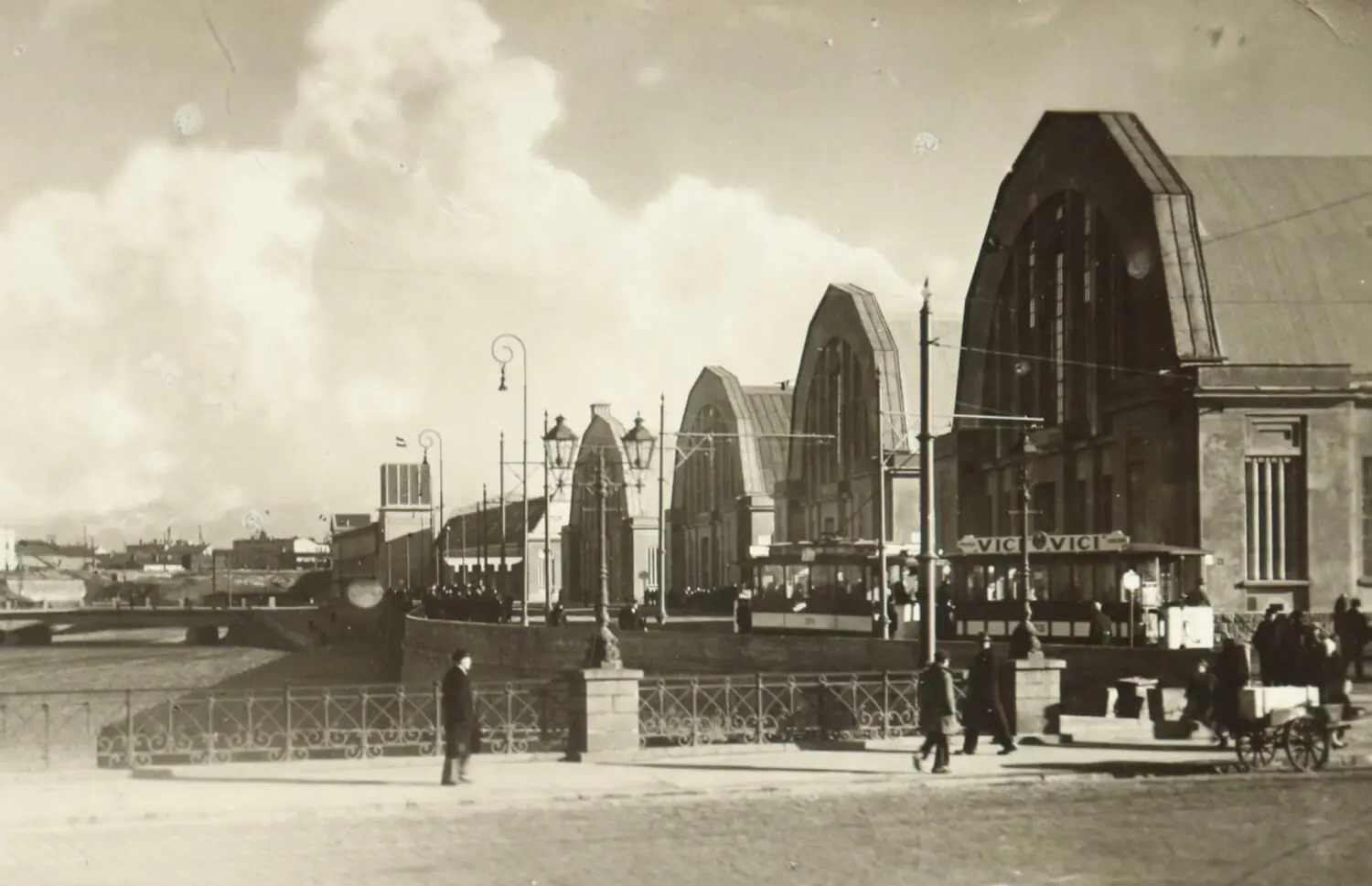
zudusilatvija.lv
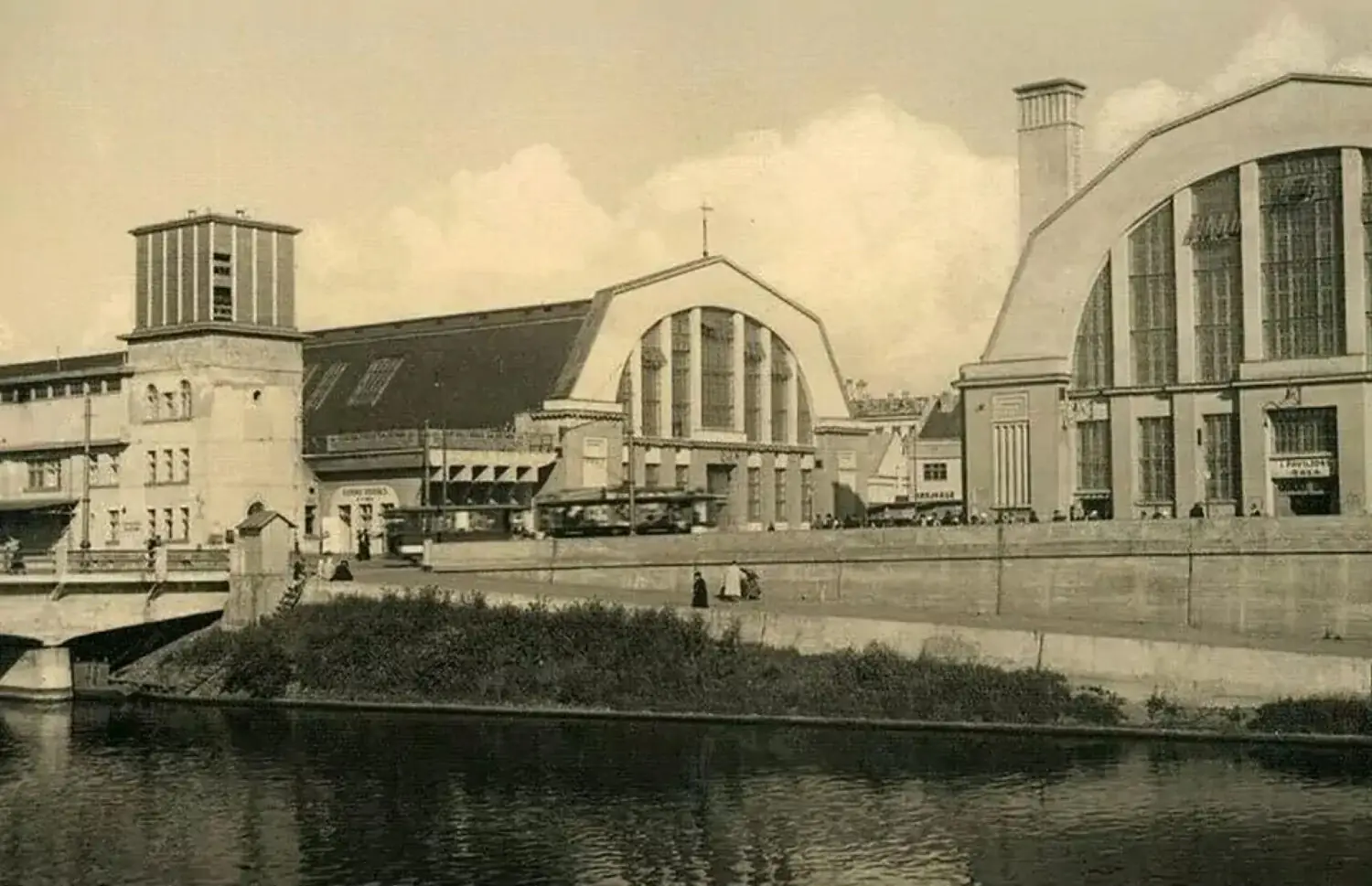
Between 1930 and 1939
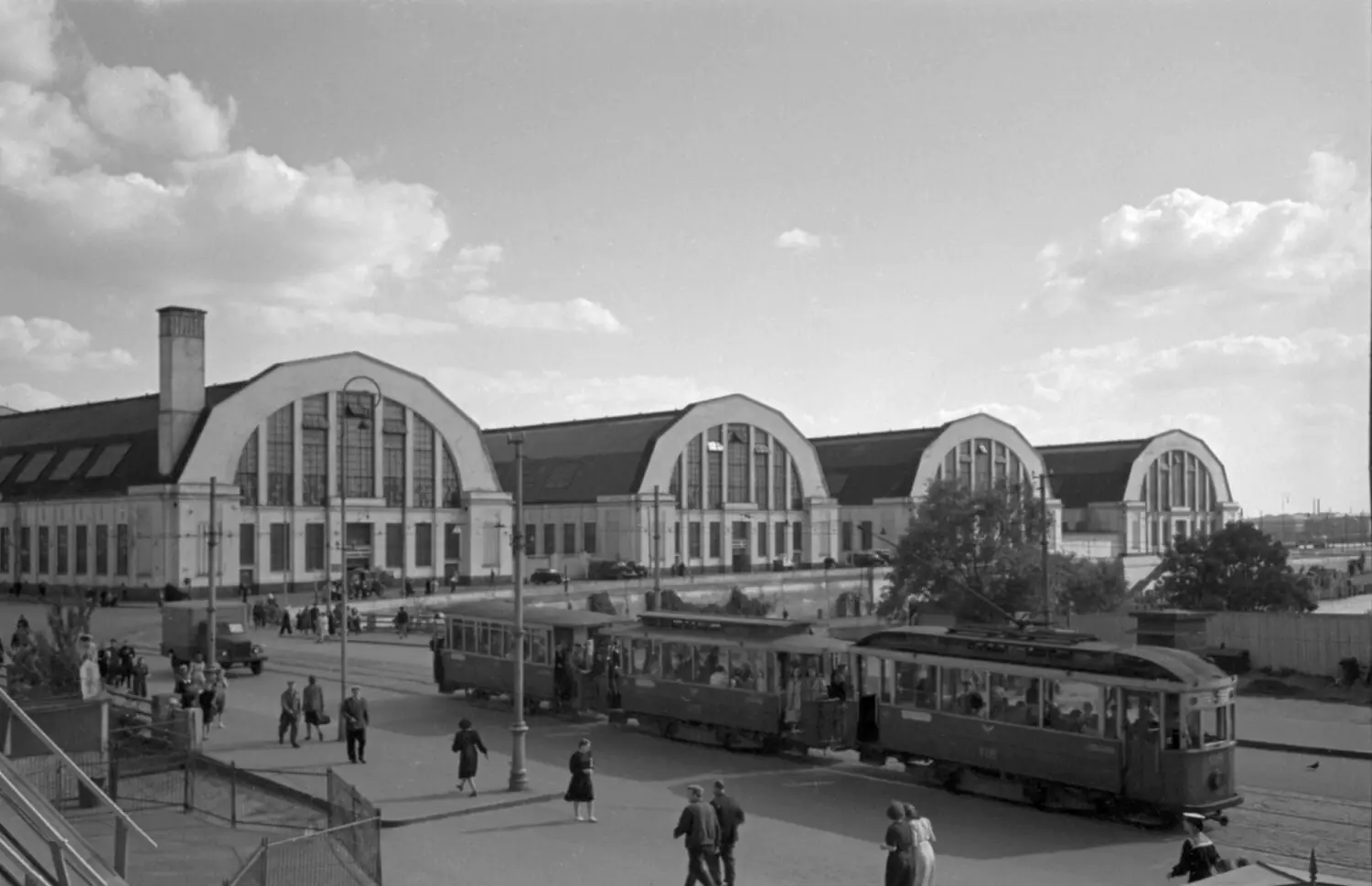
Market pavilions were one of the main attractions for foreigners in Riga in the 1930s. The excitement was caused by a variety of inexpensive products with the possibility of tasting them. Tourists from Germany and England highly appreciated the butter and bacon. The fish pavilion was especially frequented because it had large aquariums in which fish caught in different bodies of water swam. The large flow of tourists ensured that the Riga Central Market became one of the most majestic buildings in Europe.
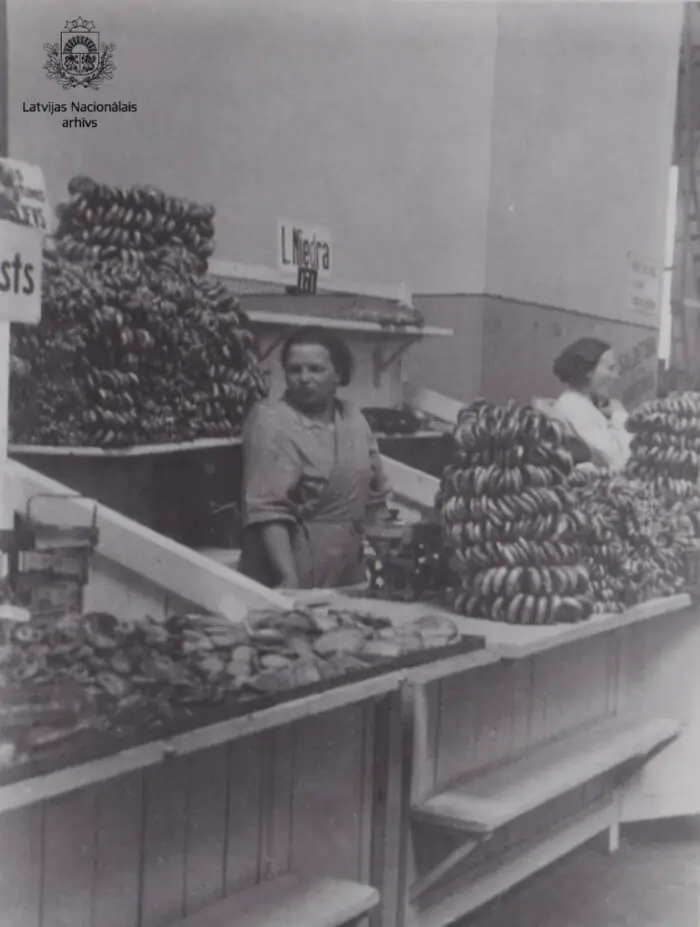
Photo: Latvian National Archive of Film and Photo Documents
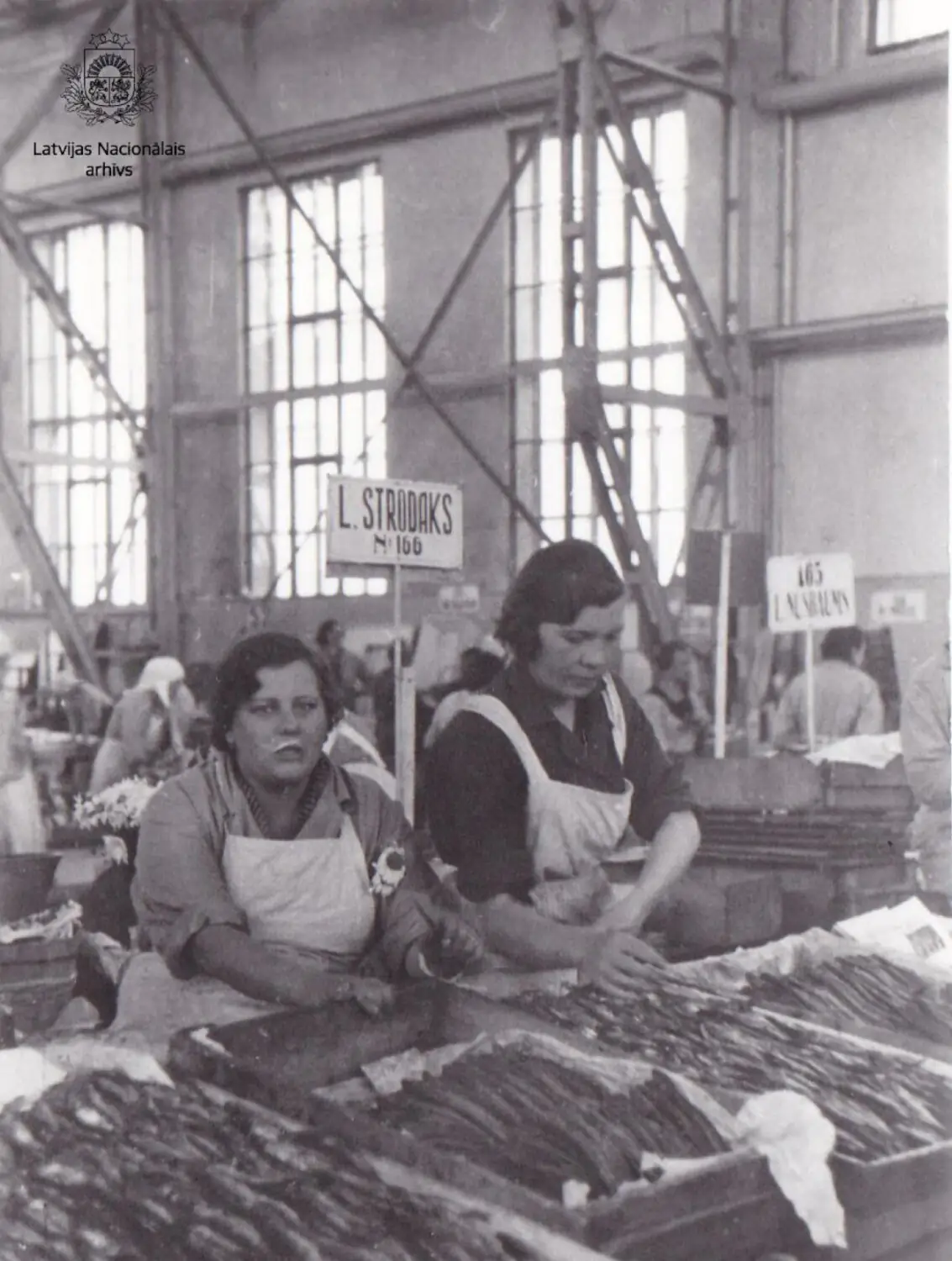
Central Market, 1930s
Photo: Latvian National Archive of Film and Photo Documents
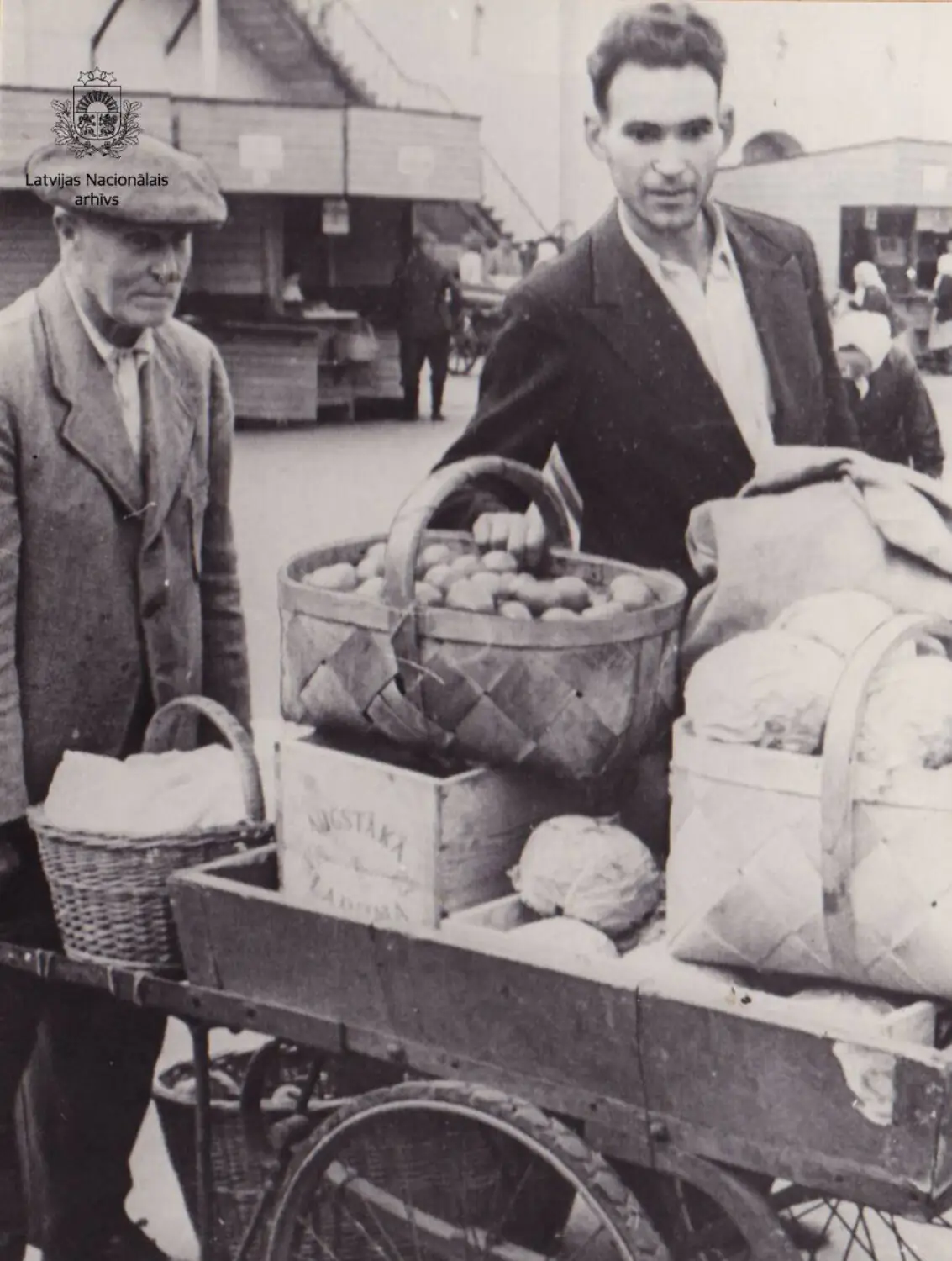
Photo: Latvian National Archive of Film and Photo Documents
The first Soviet occupation (from the summer of 1940) did not significantly affect the operation of the Central Market. However, during the occupation regime of the Third Reich, trade was extremely limited and from 1 September 1941 it was done only with cards. The arrangement of the market square for military purposes began. The two pavilions closest to the River Daugava were converted into a workshop for repairing car engines, and a firewood warehouse was built behind a temporary fence. Several pavilions of the Riga Central Market were destroyed during the active fighting in Riga in 1944. They were later rebuilt.
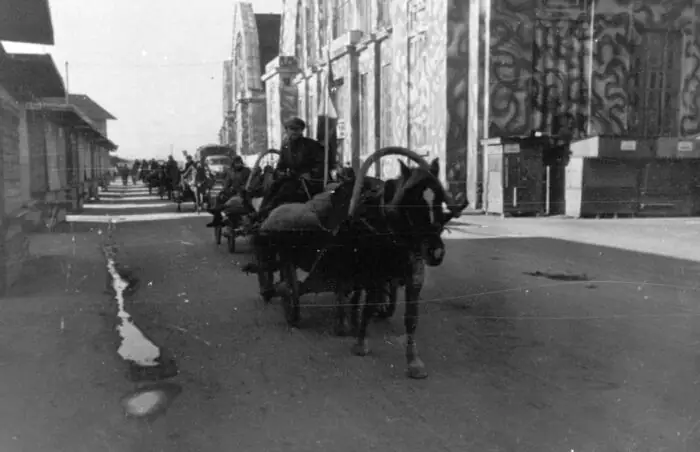
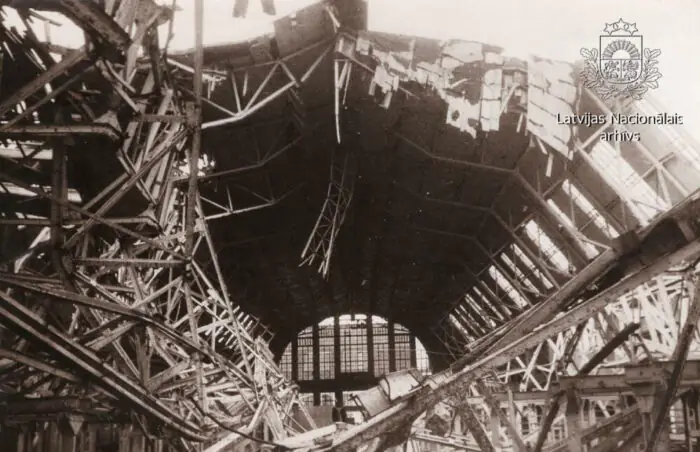
Photo: Reik Krish
After the Soviet army entered Latvia and the end of World War II, the Central Market gradually regained its status as an important trading point of the city. At the same time, the operation of the Central Market changed fundamentally, as property rights and economic relations changed.
The pavilions of the central market were restructured: the former wholesale pavilion was used to sell meat products, while the other four pavilions were arranged by types of food products: the first pavilion sold milk and dairy products, the second pavilion sold cereals and bread, the third pavilion sold fruits, vegetables and root crops, and the fourth pavilion sold fish.
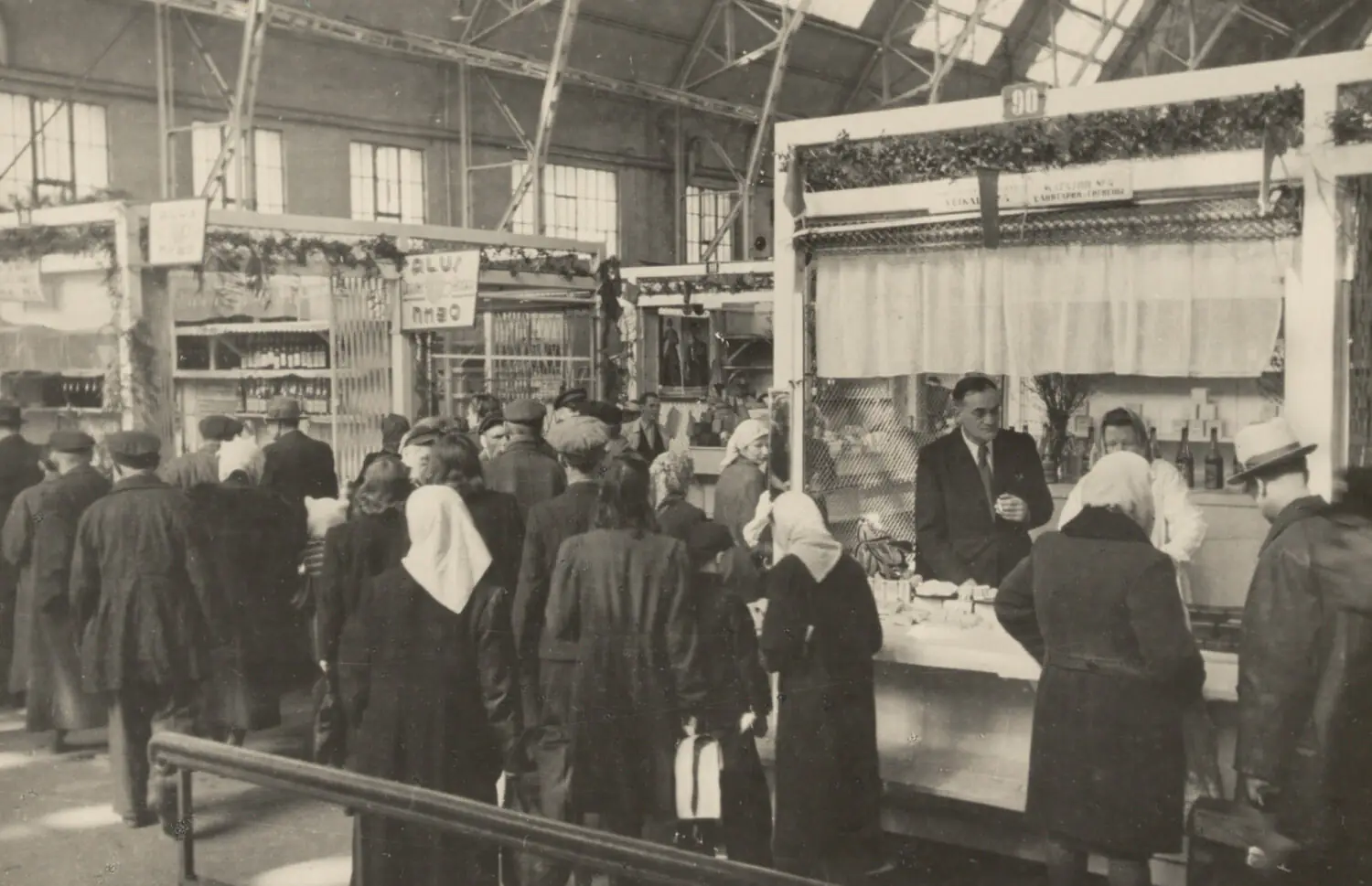
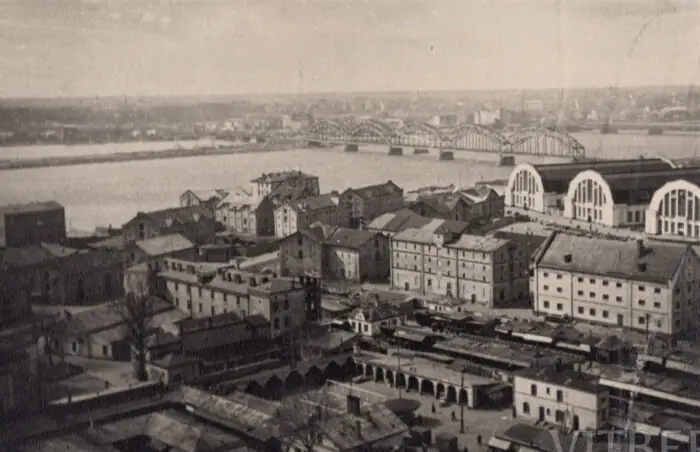
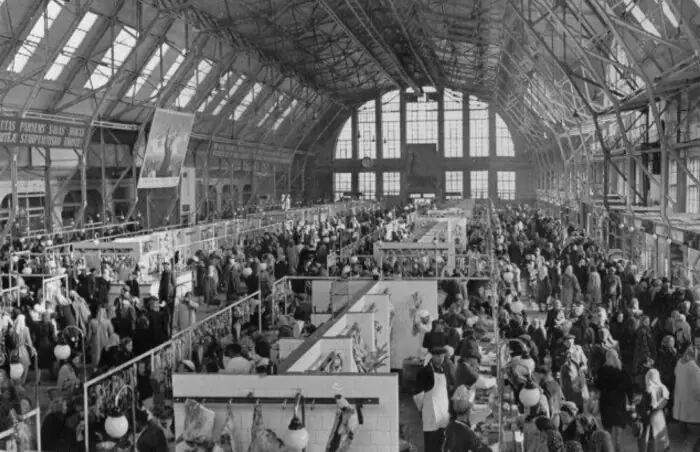
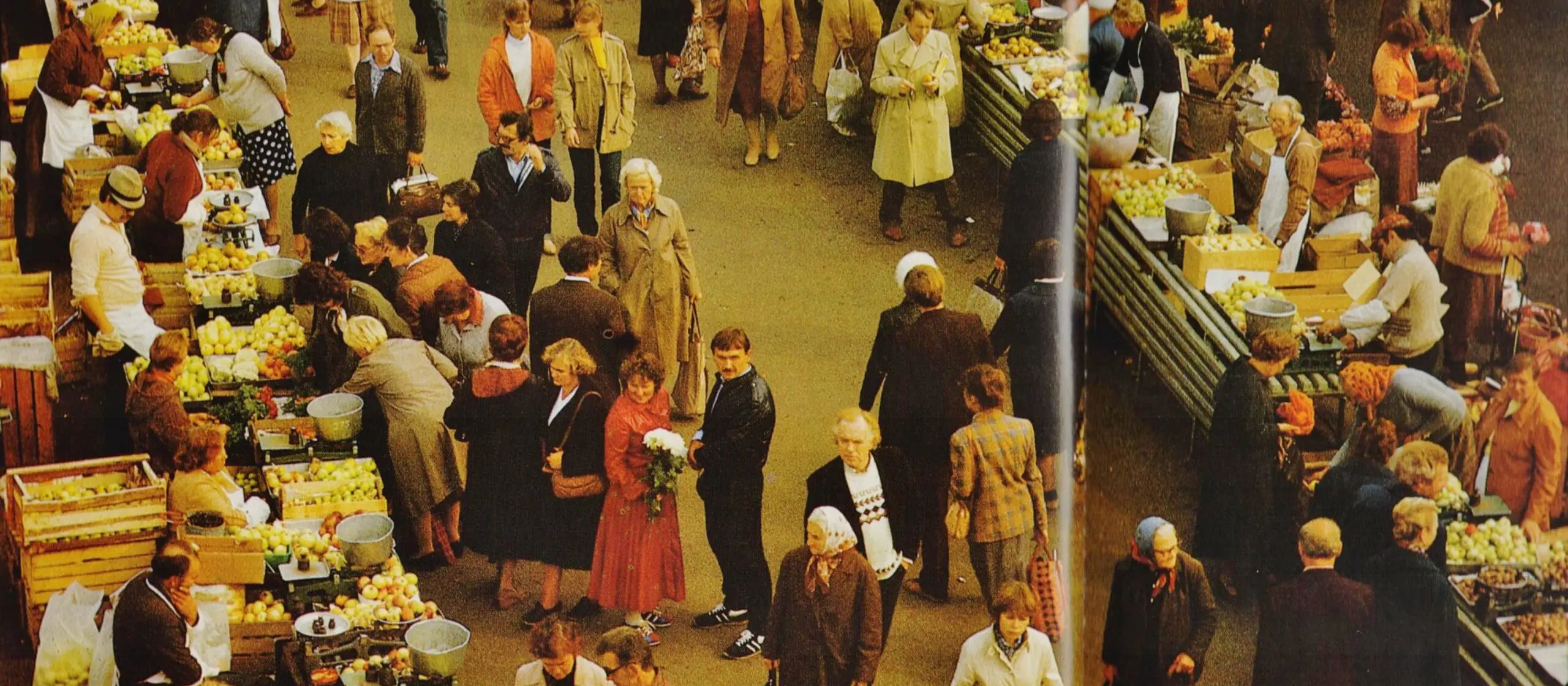
From the photo album “Riga. Nine Songs about Riga”, Avots Publishing House, 1988
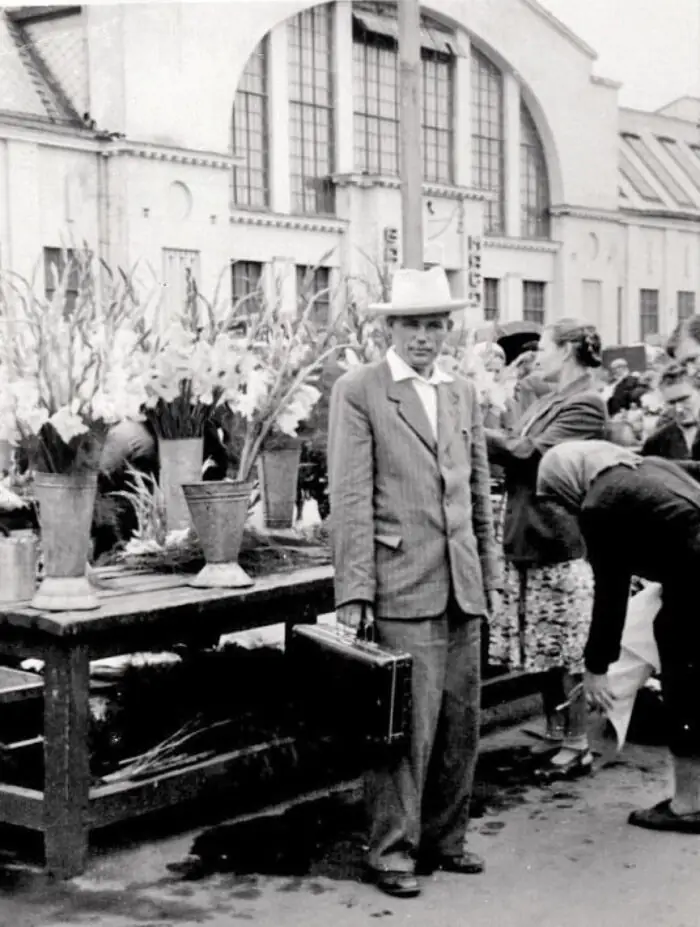
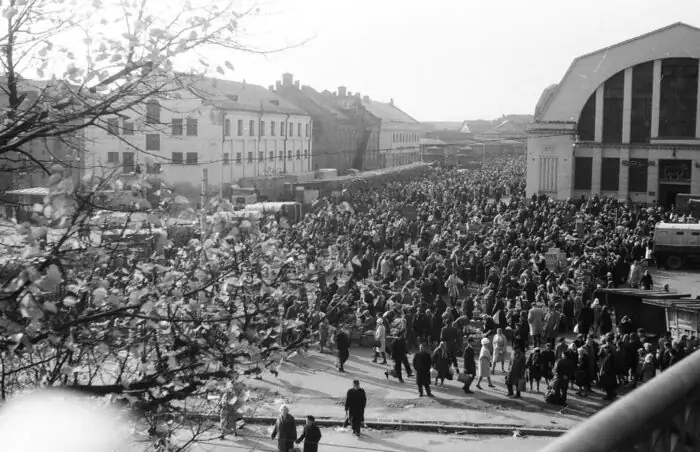
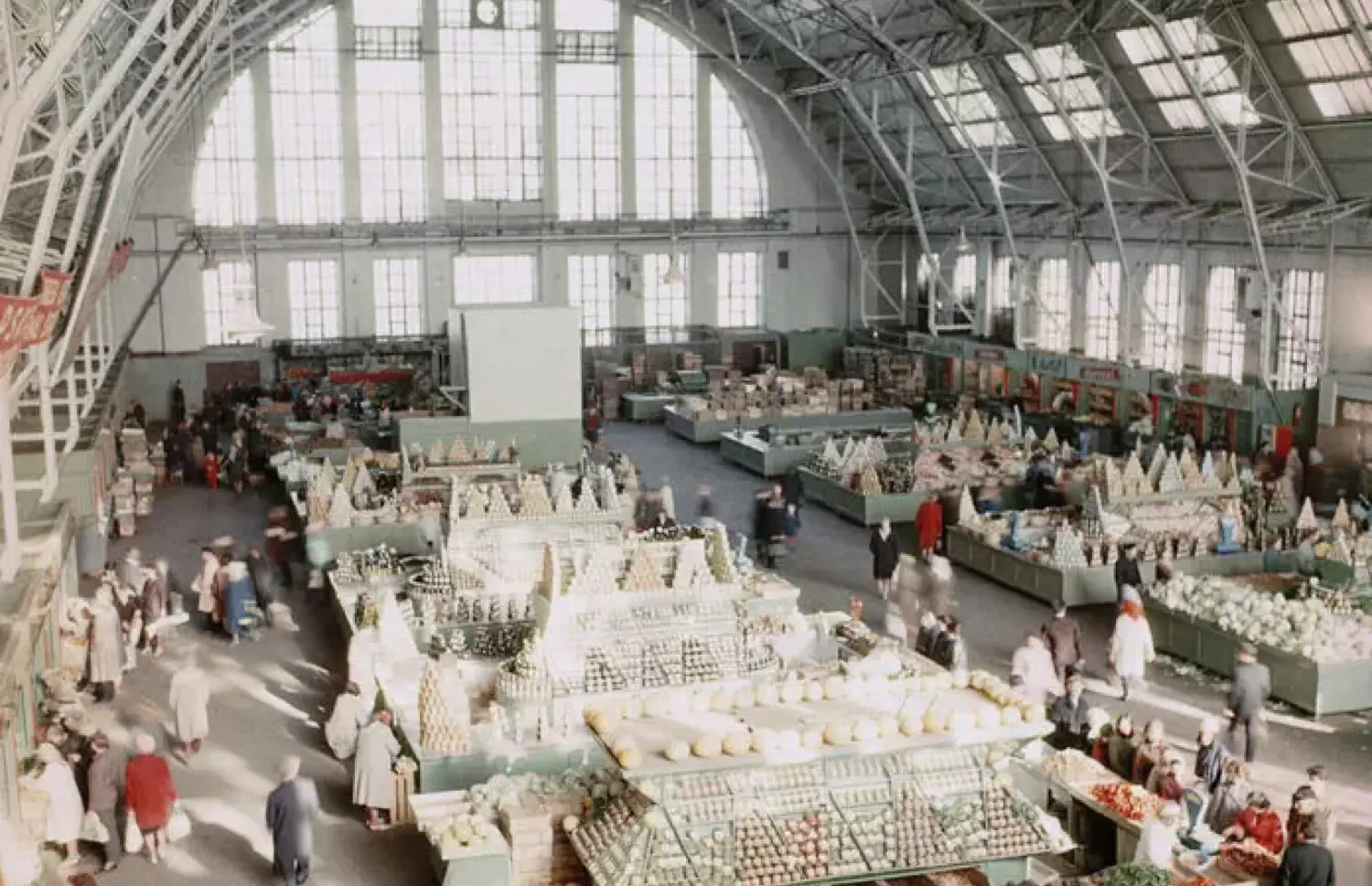
Between 1960 and 1970
In 1949, the Central Market was renamed the Central Collective Farm Market, which the Soviet press called the best market in the Soviet Union. The market bore this name until 1994.
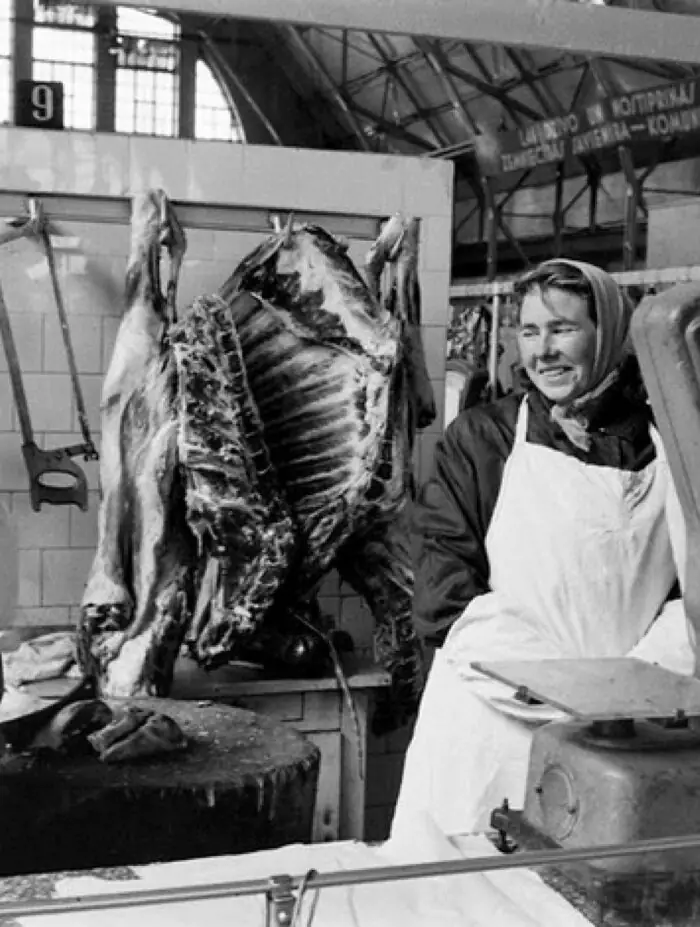
Photos: Stan Wayman
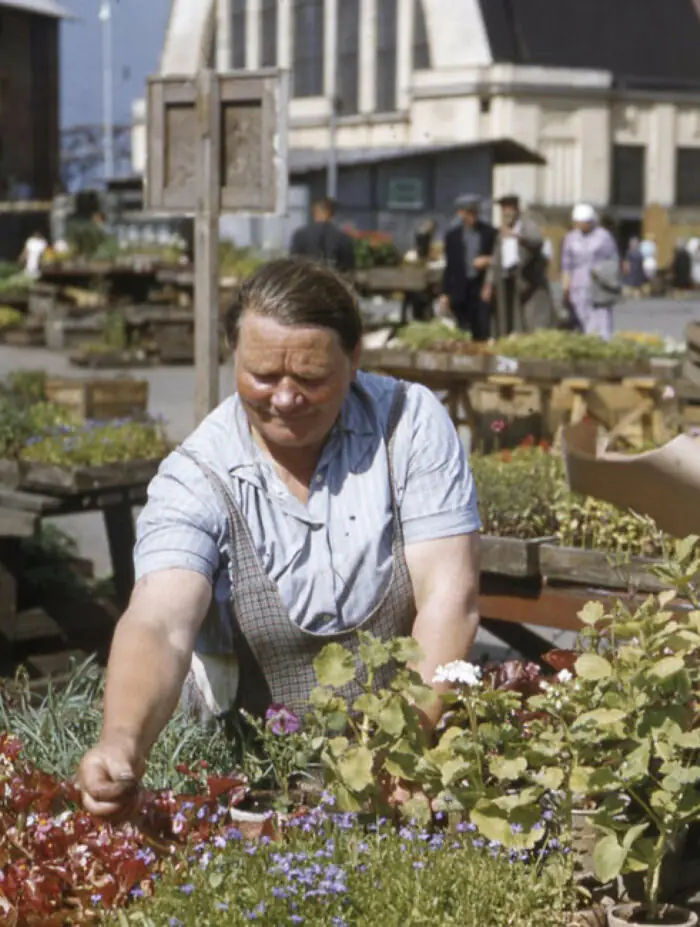
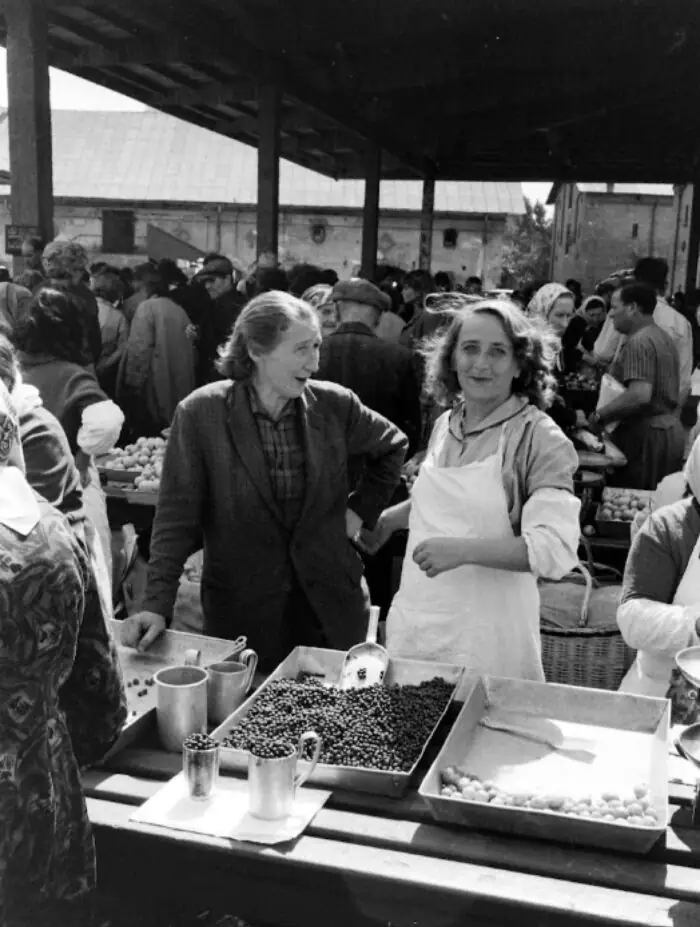
Photos: Stan Wayman

Photos: Stan Wayman
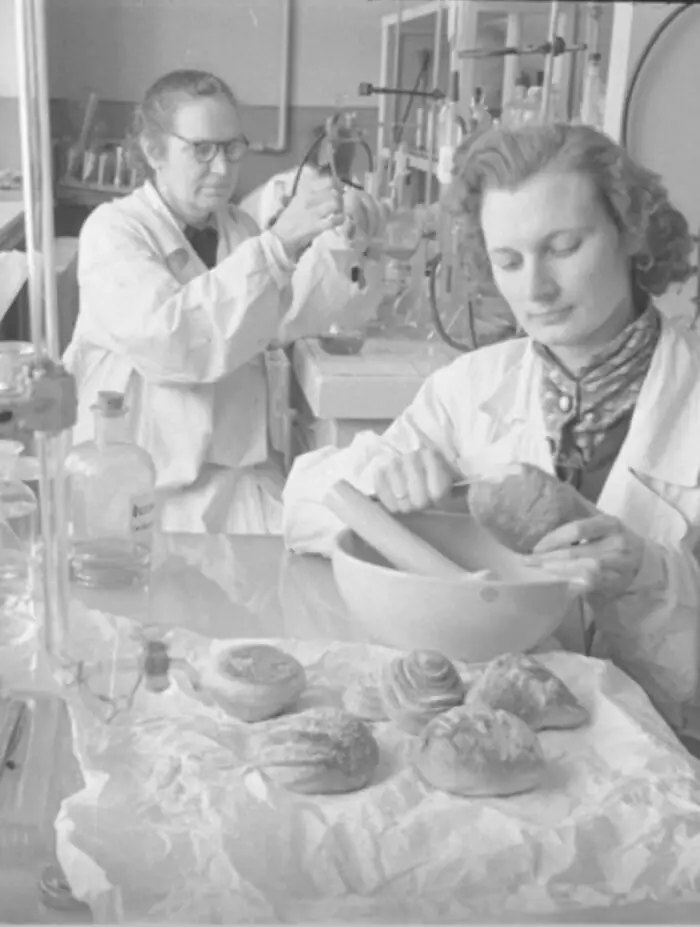
Photo: Rīgas vēstures un kuģniecības muzejs
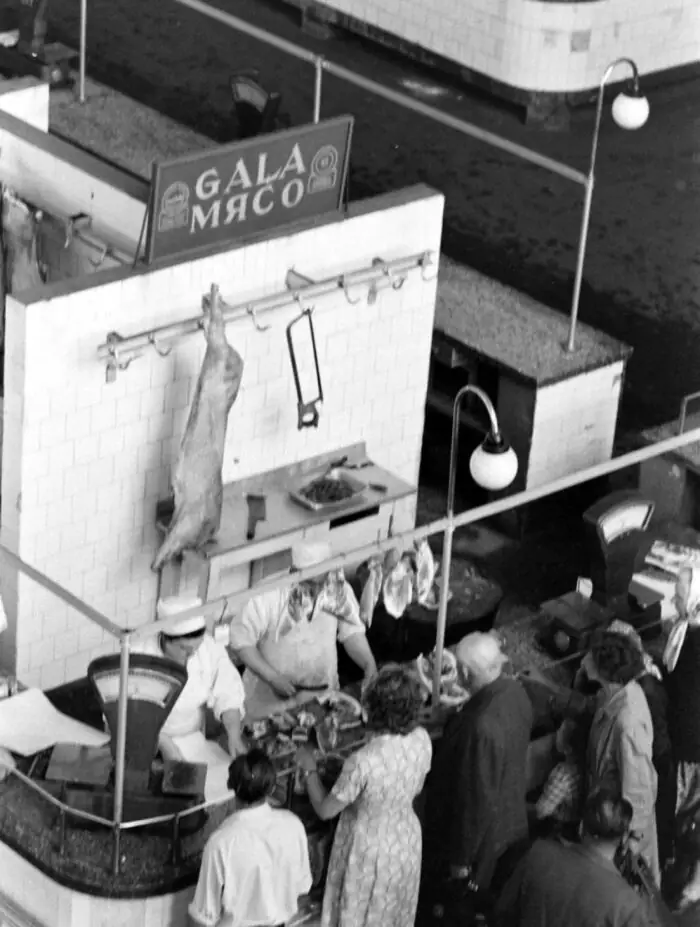
Photos: Stan Wayman
During the Soviet period, all Latvian markets became collective farm markets, while opportunities for trading products from household farms were preserved. In the mid-1970s, only 62 trading places in the Central Market were occupied by collective farms, and 800 by private farmers. At the same time, 144 trading outlets from state organisations selling industrial goods were operating in the market, while 21 collective farms were waiting in line for a place to trade.
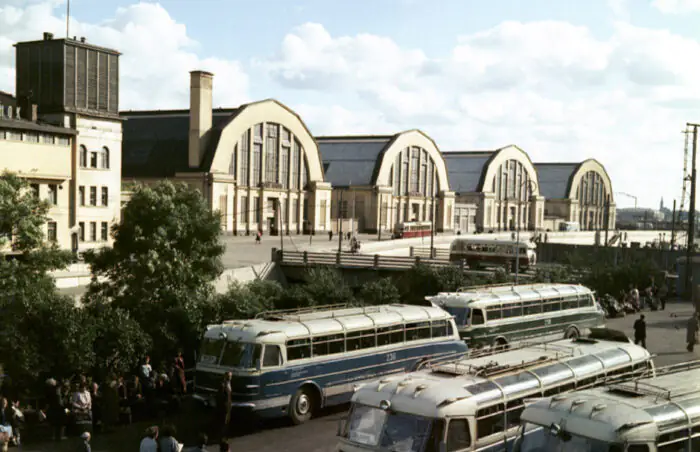
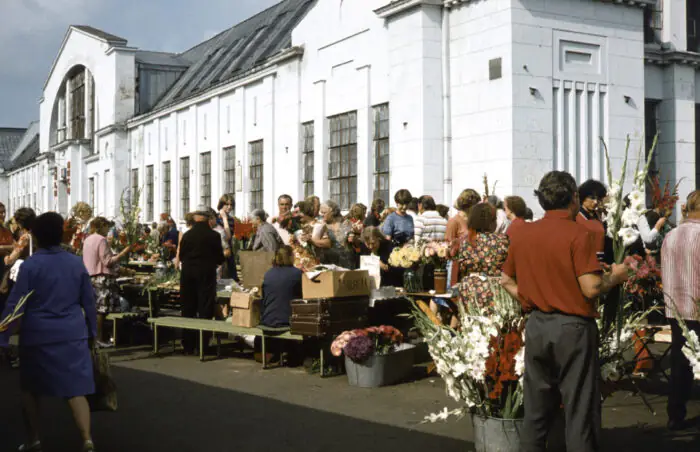
Presumably in 1982, a fire broke out in a vegetable pavilion at the market due to an electric heater left on over the weekend. When extinguishing the fire, an unexpected complication was caused by the pavilion’s design features: the roof insulation between the layers of wooden battens was provided by peat plates, which were constantly smoldering, maintaining a very high temperature. To dismantle it, firefighters spent three days tearing off the roofing iron sheet by sheet. As the pavilion was filled with goods, the doors were not opened, and a cordon of soldiers from the Riga garrison was set up around the pavilion to ensure their safety. On the third day, the water in the pavilion was up to the waist.
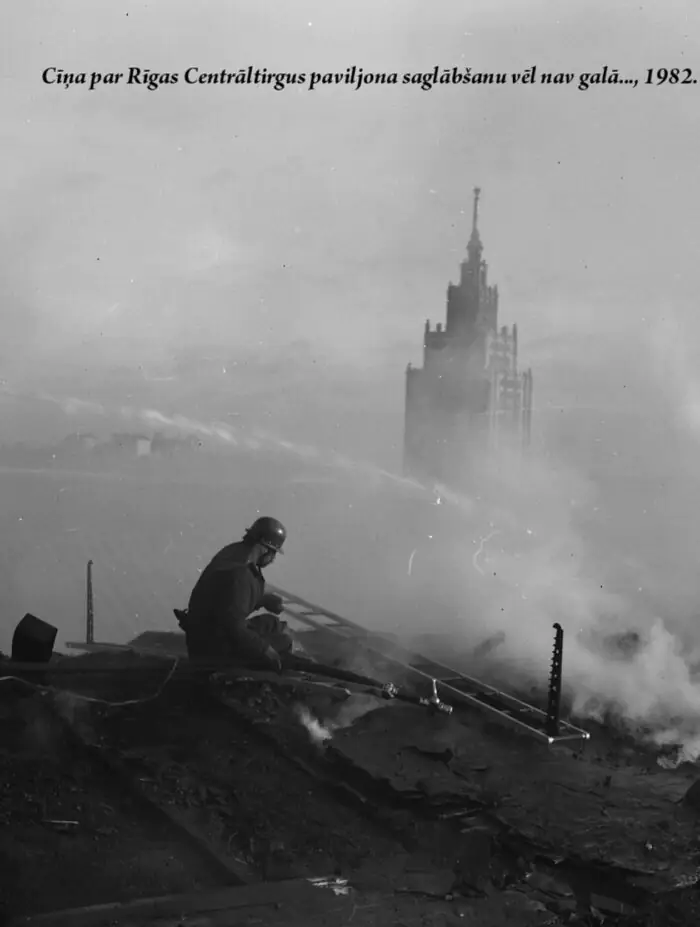
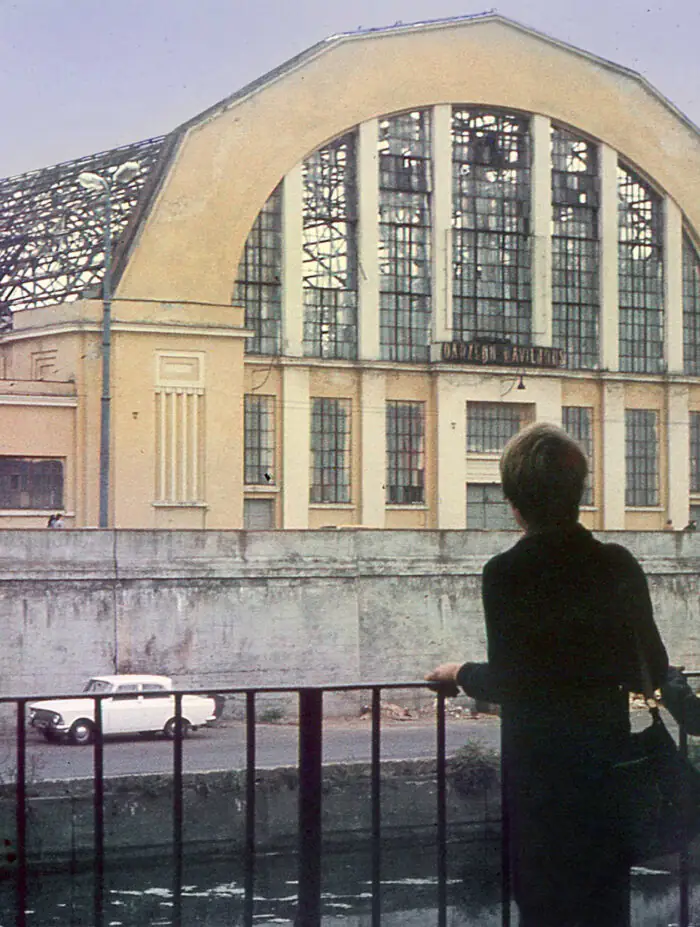
Photo: Kārlis Kalseris
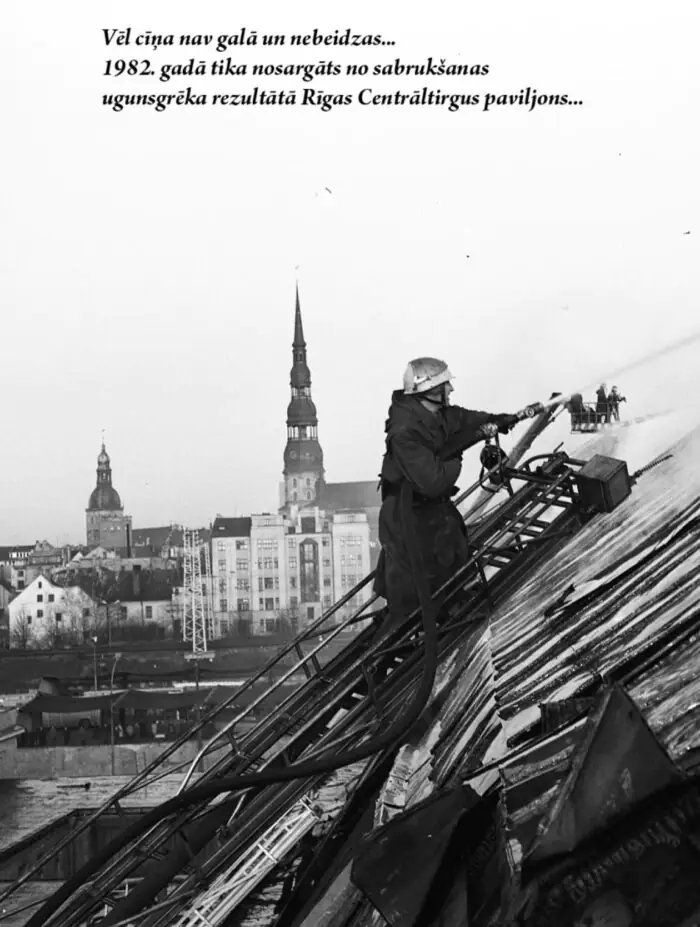
On 18 October 1983, the Council of Ministers of the Latvian SSR declared the pavilion complex of the Central Collective Farmers’ Market a cultural monument of national importance.
After Latvia regained its independence in 1991, the introduction of free (market) economic relations was an important milestone in the development of the Central Market: it was quickly revitalised and many private entrepreneurs became active.
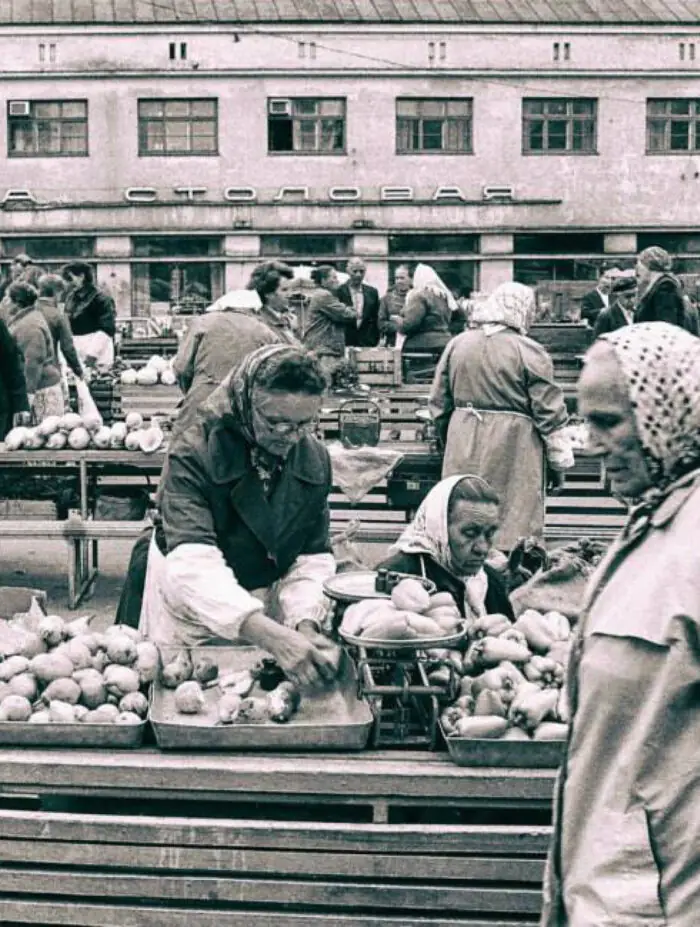
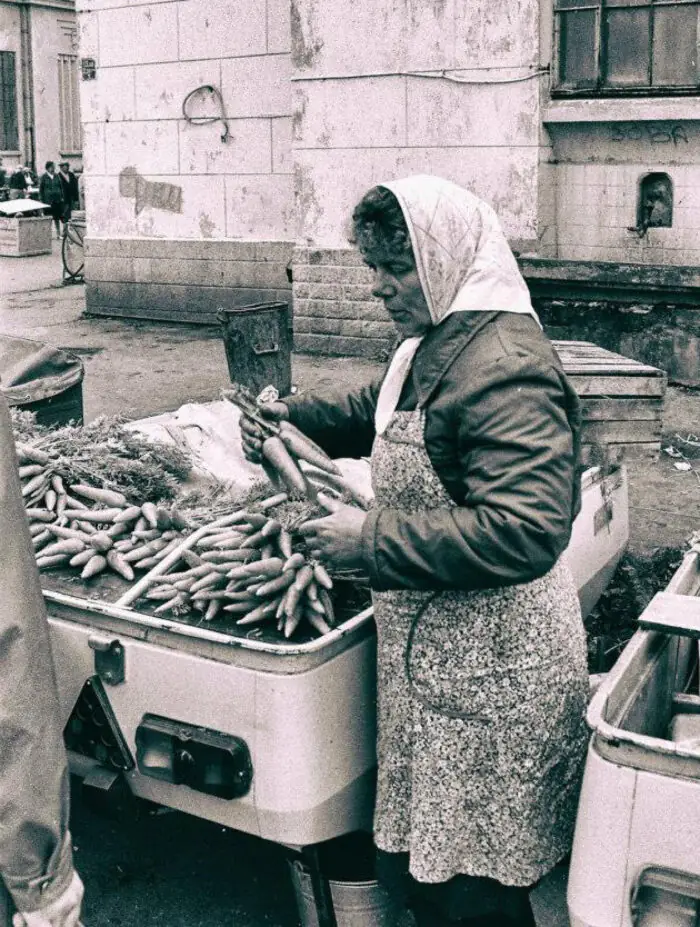
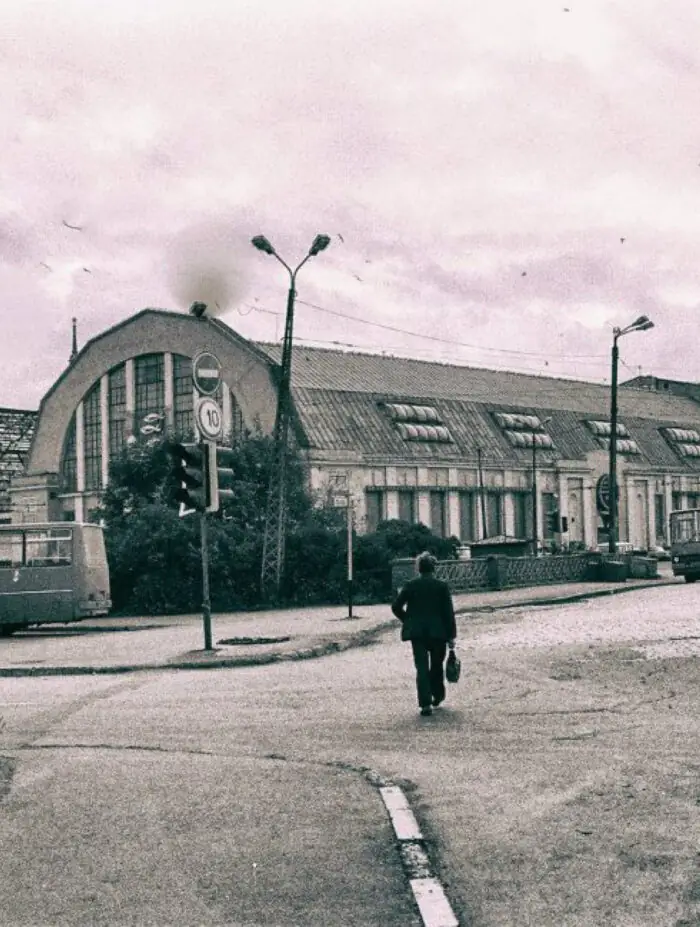
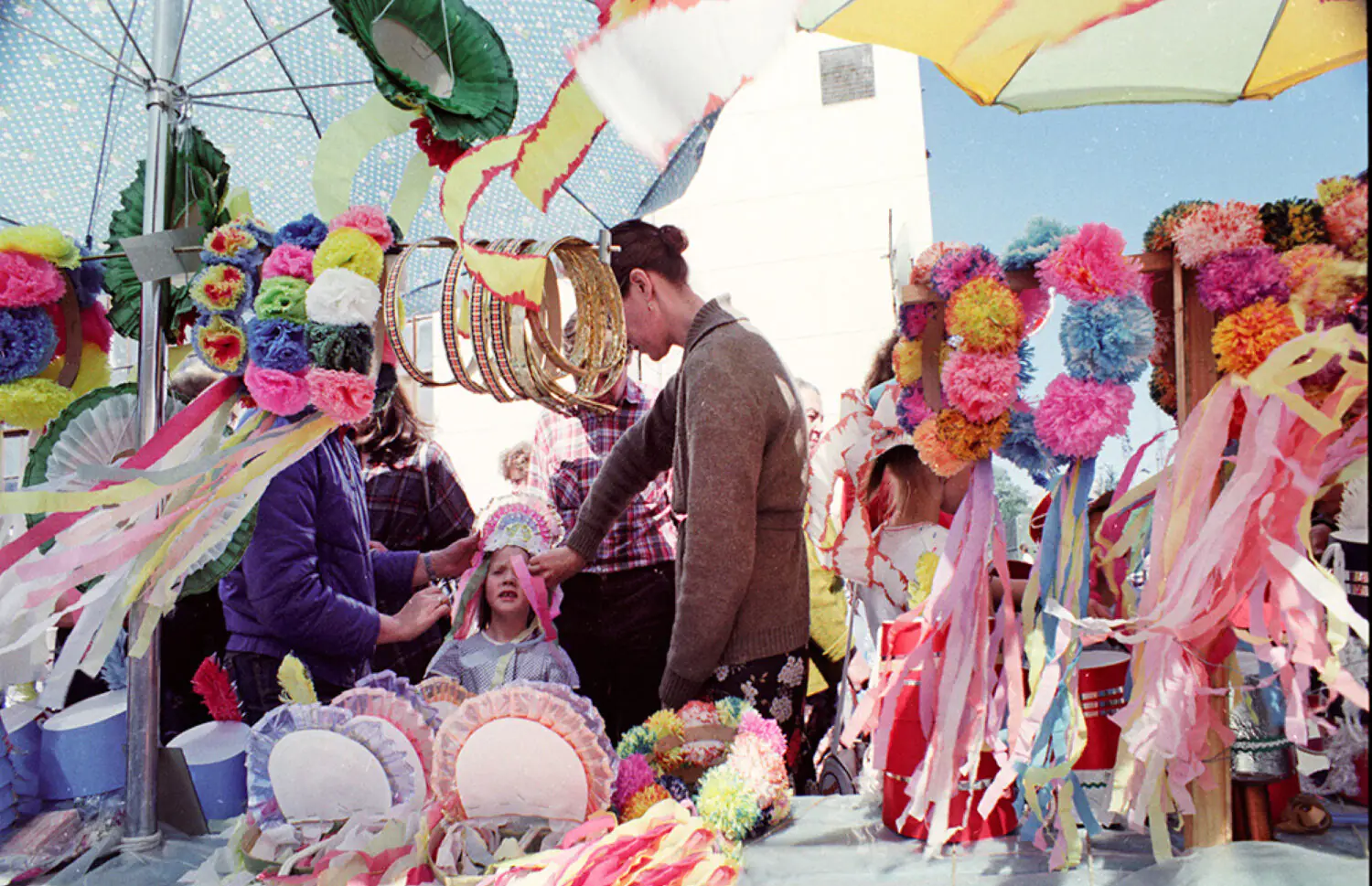
Photo: Yuri Lev, personal archive
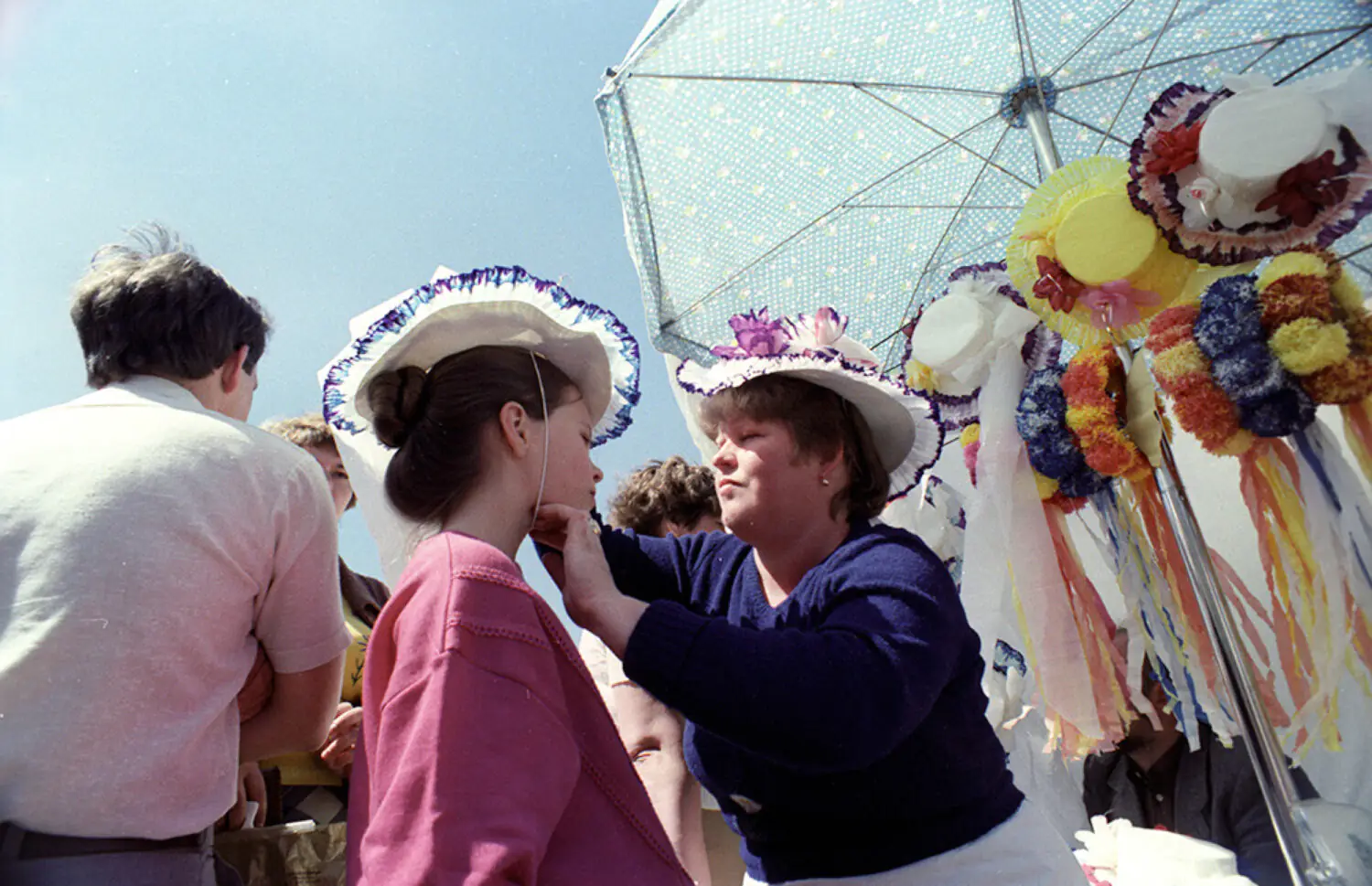
Photo: Yuri Lev, personal archive
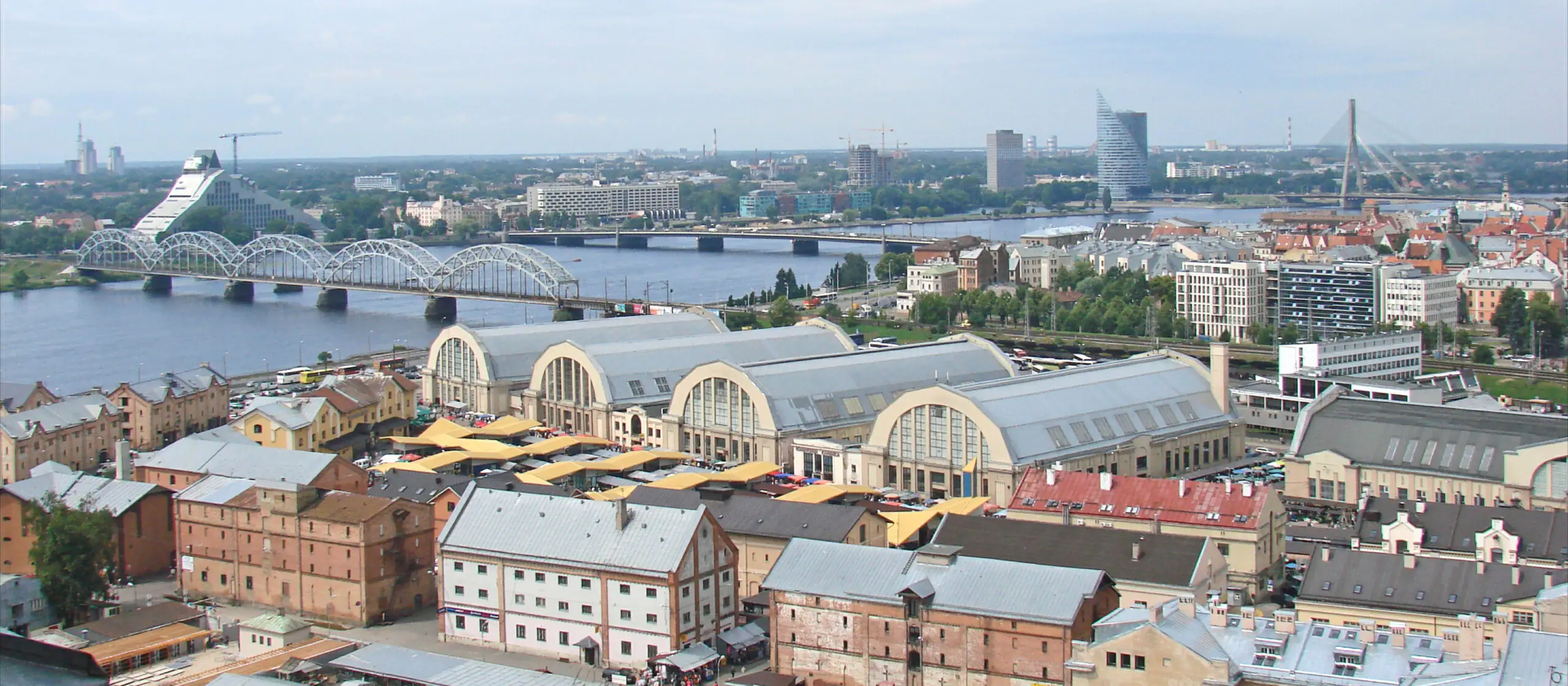
commons.wikimedia.org
In the first half of the 1990s, industrial production in Latvia declined, unemployment grew, and the financial situation of many people deteriorated, but despite this, the Riga Central Market remained the most popular trading place in Latvia. In 1994, the word “collective farm” was removed from the name of the market and it became simply the Central Market again.
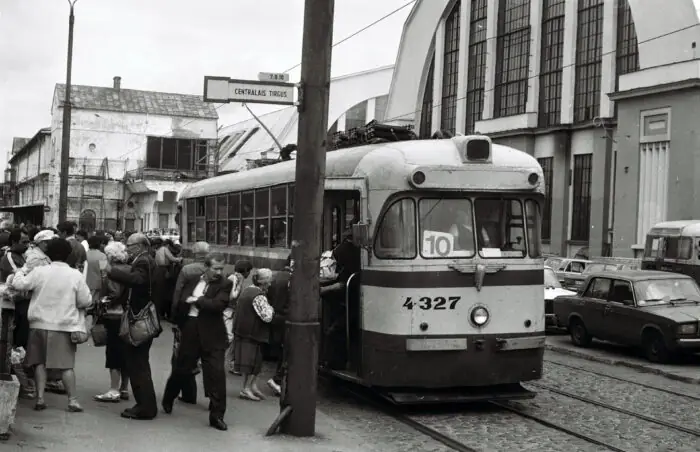
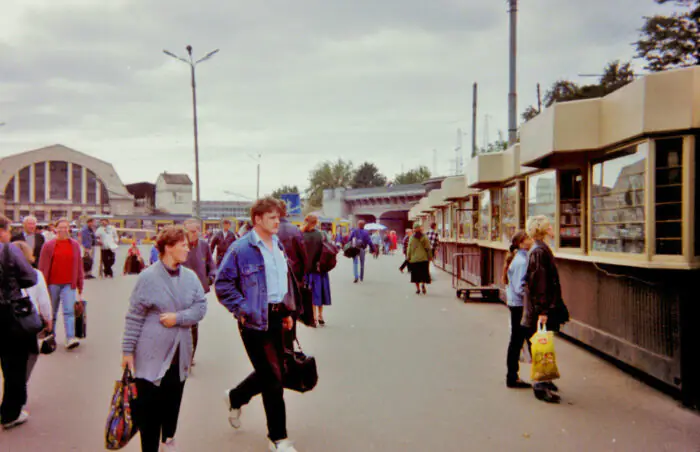
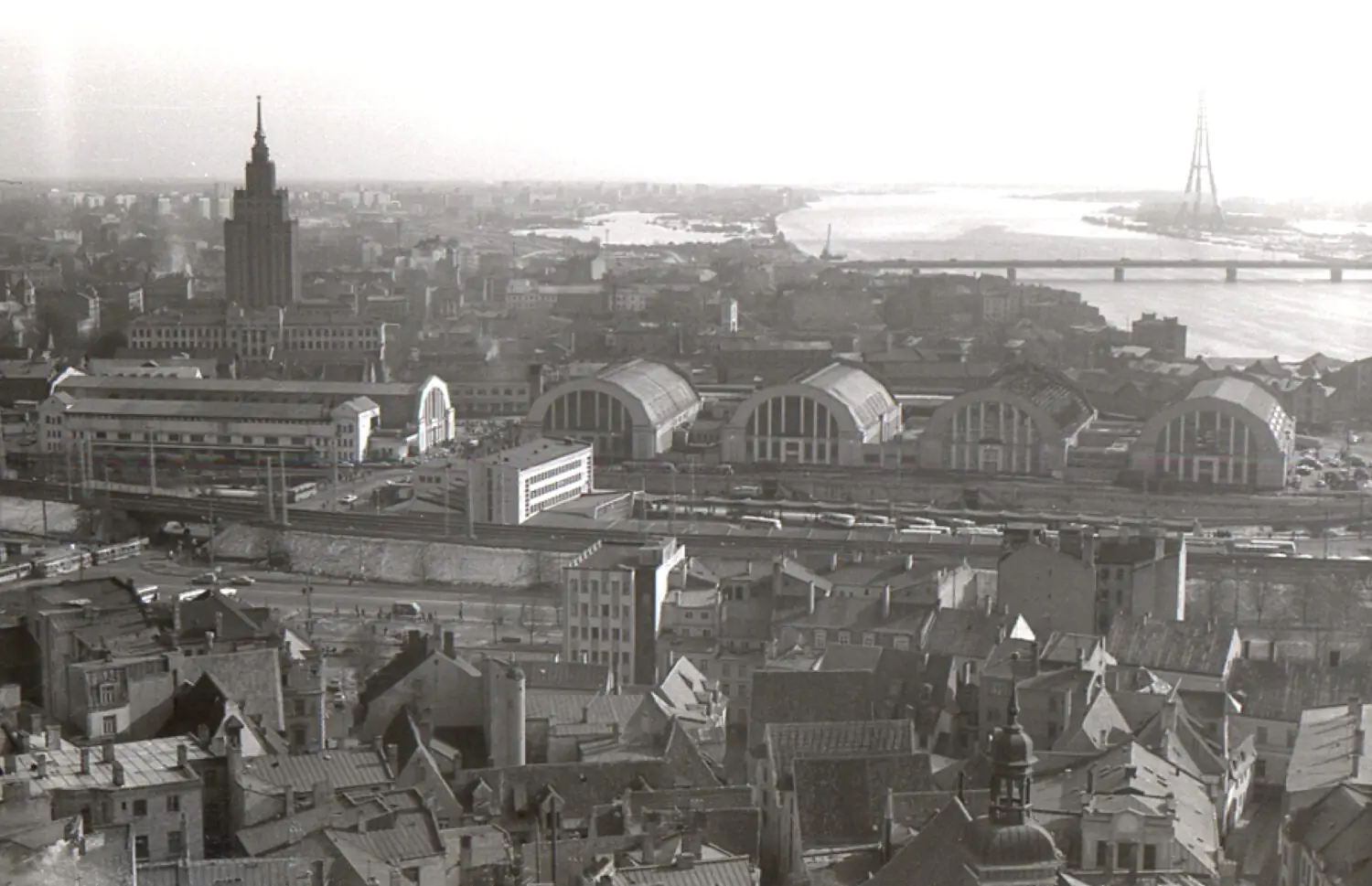
On 6 December 1997, UNESCO inscribed the historical center of Riga, which includes the Central Market area, on the World Heritage List. The recognition of the territory as a cultural and historical heritage of the entire world community promoted the interest of tourists and foreign investors.
In 1998, the reconstruction of the market began according to the project of architect Ulda Schoenberg. Several pavilions had two floors added to each: one for shops, the other for cafes and exhibition areas. The old stalls and trailers inside were demolished and modern shops were built in their place.
On 15 January 2019, the reconstructed Gastronomic Pavilion, closed since autumn 2016, opened in the Central Market. The Central Market is now owned by Riga City Council. It still consists of five pavilions – dairy, meat, vegetable, fish and gastronomic pavilions, as well as outdoor trading places: kiosks, trailers, shopping centers set up in old red barns, as well as a farmers’ market created a few years ago. Summary more than 3,000 retail spaces. The market is gradually being rebuilt and restored. In recent years, strict sanitary norms have been introduced here, and its own laboratory and checkweighers have reappeared.
Rīgas Centrāltirgus is one of the largest European markets still located in the city center. It still operates also as one of Riga’s main tourist attractions and is being developed to remain modern.
The material was prepared with umagamma team.


